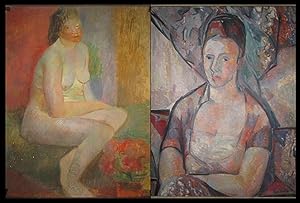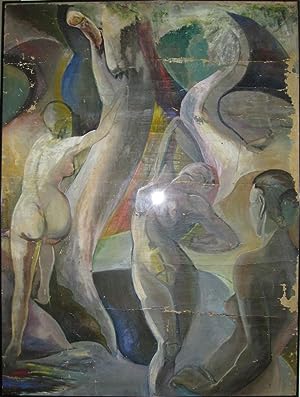biographies, Signé (Plus de 75 000 résultats)
Type d'article
- Tous les types d'articles
- Livres (74 606)
- Magazines & Périodiques (66)
- Bandes dessinées (9)
- Partitions de musique (2)
- Art, Affiches et Gravures (120)
- Photographies (38)
- Cartes (9)
-
Manuscrits &
Papiers anciens (265)
Etat
Reliure
Particularités
- Edition originale (46 848)
- Signé
- Jaquette (40 159)
- Avec images (34 676)
- Sans impression à la demande (75 073)
Livraison gratuite
Pays
Evaluation du vendeur
-
Signed Photograph
Edité par n.p., New York, 1896
Vendeur : Manhattan Rare Book Company, ABAA, ILAB, New York, NY, Etats-Unis
Edition originale Signé
Etat : Fine. First edition. STUNNING LARGE HISTORIC PHOTOGRAPH OF TESLA, SIGNED AND INSCRIBED BY TESLA TO EDWARD EVERETT BARLETT. Albumen print, signed and inscribed by Tesla on the original gray mount: "To my friend E. E. Bartlett, New York, June 9, 1896, Nikola Tesla." The photograph shows Tesla in profile seated before the spiral coil of his high-voltage transformer at his East Houston St., New York, laboratory. The photograph, in addition to being arguably the most famous and dramatic portrait of Tesla, is scientifically significant, for it served as a demonstration of the power of his new technique of providing illumination with vacuum tubes. A reproduction of the photograph appeared in the May 20, 1896 issue of Electrical Review, alongside an article where a reporter interviewed Tesla about the novel circumstances of the creation of this photo: "As to his continuous efforts to improve his system of lighting by vacuum tubes, with which he has been identified during a number of years, Tesla said that he has been more successful than he had ever dared to hope. His methods of conversion from ordinary to high-frequency currents are rendered simple in the extreme, the devices are thoroughly reliable and require no attention. Last, but most important of all, he has succeeded in increasing the candle-power of the tubes to practically any intensity desired. "A remarkable and most telling result of the advances he has made in the last direction is a portrait, which he has reluctantly allowed us to use, and which was obtained by two seconds' exposure to the light of a single vacuum tube of small dimensions. Tesla stated further that photographs obtained by the light of such powerful tubes show an amount of detail which no picture taken by the sun or flash light is capable of disclosing. This feature is only faintly shown in the reproduction on this page. The photograph was made by Tonnelé & Company, artists' photographers, who aided Mr. Tesla in his attempts to photograph by the light of phosphorescent tubes about two years ago. "When asked, Mr. Tesla said, in explanation of the picture, speaking with deep feeling, that the volume he was reading was one of the 'Scientific Papers,' of Maxwell, given to him as a token of friendship by Professor Dewar; the chair a gift of his warmest friend, Mr. E. D. Adams; and as to the queer coil to his left, Mr. Tesla hesitatingly remarked that it was the object 'dearest of all in his laboratory,' having been a most valuable instrument in his many-sided investigations. "Mr. Tesla added, good humoredly, that, had it not been for the extraordinary manner in which the photograph was taken, he would not have given this explanation even to such an important personage as the representative of the ELECTRICAL REVIEW." Tesla was correct in insisting that the lighting from the vacuum tubes produced a high-level of detail in the photograph; the intricacies of the coil, in particular, appear remarkably sharp. Overall, the photograph has an orange tint, almost certainly the result of his novel lighting technique. Although this is the only signed example of this photograph we are aware of, it has been reproduced in recent years many times, including serving as the cover image for Marc J. Seifer's groundbreaking biography of Tesla, Wizard. Provenance: The recipient, Edward Everett Bartlett (1863-1942) was a celebrated New Yorker (both he and Tesla were featured in Moses King's Notable New Yorkers, 1896-1899), who founded Bartlett & Co., (later Bartlett Orr Press) on lower Broadway, in 1888. Variously described as an artist, illustrator, printer, and engraver, Bartlett was internationally known as "an expert on newspaper type, and he was credited with the development of much of the linotype type used in newspaper offices throughout the country"; additionally he published several works on the art of the book. (New York Times, Obituary, 1942). Size: Image, 7 3/4 x 9 1/2 inches; with mount, 8.5 x 11 inches. Archival matting and framed with UV-.
-
[Archive]: A Collection of Inscribed Books, Correspondence, and Ephemera Related to FDR and his Friend and Personal Assistant, Marvin H. "Mac" McIntyre
Edité par Washington, D.C., 1943
Vendeur : Between the Covers-Rare Books, Inc. ABAA, Gloucester City, NJ, Etats-Unis
Edition originale Signé
Unbound. Etat : Near Fine. A remarkable collection of letters and limited edition books from Franklin Delano Roosevelt to his longtime friend and personal secretary, Marvin H. "Mac" McIntyre. The collection includes 10 Inscribed books (each issued in an edition of 100 copies or less), a large, early Inscribed portrait, nine Typed or Autograph Letters Signed, and several additional items related to their long friendship and professional relationship. The collection is overall near fine. McIntyre (1878-1943) was born in Kentucky and studied at Vanderbilt. While working as Special Assistant to Secretary of the Navy Josephus Daniels, he befriended then-Assistant Secretary of the Navy Franklin D. Roosevelt. McIntyre went on to work on Roosevelt's 1920 Vice Presidential campaign; this collection includes a striking 1920 portrait of Roosevelt warmly Inscribed: "For the only Mc [sic], in memory of our work together, past present, and to come. Franklin D. Roosevelt. August 3, 1920." McIntyre remained in Washington during Roosevelt's subsequent tenure as governor of New York, but as Roosevelt's 1932 campaign gained steam, he tapped Mac to be his Press Officer. Upon taking office in March 1933, Roosevelt appointed McIntyre as his Appointments Secretary, essentially putting him as close to the President as Missy LeHand or Grace Tully. McIntyre was away from the White House from 1938-1941 due to illness, but returned to his post in 1941. McIntyre died in December 1943, in the middle of Roosevelt's third term. McIntyre had several titles over the years: Assistant Secretary in Charge of Appointments, Traveling Secretary, Appointments Secretary, and Correspondence Secretary, and it is clear that the two men were close. In addition to warmly Inscribed copies of Roosevelt's cruise logs and famed "Christmas books" (including the highly sought-after *Addresses of Franklin D. Roosevelt and Winston Churchill* of 1942), the correspondence, some of it written during McIntyre's convalescence in North Carolina, shows Roosevelt's esteem for the man. In 1938 he writes: "I am often touched, but seldom have I been so touched as by your letter to Miss Le Hand. It was one of a very small number of letters which occasionally she shows to me. Both of us were dissolved in tears. Your one hundred per cent support in the mountains of North Carolina means more to me than carrying Vermont." The letters, four four Autograph Letters Signed and five Typed Letters Signed which span the years 1933-1942, are brief and very cordial catch-ups; FDR writes of his confidential travel plans, a fishing expedition, and thanks him for a Christmas gift. One letter was sent from the London Economic Conference sometime in July 1933, and another is a Signed copy, of a letter of thanks that FDR sent to the Dean of Atlanta Law School, who was conferring an honorary doctorate on McIntyre. All of the letters save one are in their original envelopes; the envelopes show light wear, the letters, aside from a single original fold, are fine. Also included are four notes Initialed by Roosevelt and five typed carbons of letters from FDR to McIntyre (likely made by the family), the originals not present here. Another testament to their friendship is that several items were gifted to McIntyre's widow after her husband's death. Roosevelt Inscribes his 1943 "Christmas book" to her: "For Dodie McIntyre - This was on the list for good old Mac, and I want you to have it in his memory. Franklin D. Roosevelt." He would also send her an Inscribed copy of the following year's "Christmas book," sadly his last. Also included is a holiday letter written by FDR's long-time Press Secretary Stephen T. Early to McIntyre's widow Dodie five years after his passing: "I treasure your friendship as one of my most satisfying possessions." Dodie was also invited to the White House for a 1966 presentation of a portrait of Eleanor Roosevelt to the White House collection; this invitation is also included. A remarkable collection of rare and desirable Roosevelt publications, warmly Inscribed, and letters and related material, the fruit of a longtime personal and professional relationship.
-
THE RUSSELL COLLECTION: BOOKS, BROADSIDES, AND EPHEMERA OF THE FRENCH REVOLUTION
Edité par 1571 - 1947, 1571
Vendeur : Second Story Books, ABAA, Rockville, MD, Etats-Unis
Edition originale Signé
The Russell Collection contains over 300 books, broadsides, and pieces of ephemera produced between the waning decades of the ancien regime and the fall of Napoleon Bonaparte. The collection was assembled in the early 1950s by William F. Russell (1890 - 1956), President of Columbia University's Teacher's College from 1949 to 1954. With material spanning the 16th to the early 20th century, the majority of the collection was produced between 1775 and 1800. Highlights include early editions of the 1791 and 1793 French Constitutions, letters written and signed by pioneering economist Anne Robert Jacques Turgot, and official documents signed by Robespierre and other members of the Comite du Salut Public. The Collection is comprised of the following components: 1) The French Monarchy and the Ancien Regime; 2) Ideological Roots of Revolution; 3) The Transition to Republicanism and Collapse of the Monarchy; 4) The National Convention and the Committee for Public Safety; 5) Historical and Contemporary Context; and, 6) Miscellanea (Ephemera, Manuscripts, and Books). Most of the printed material was published by one of the two major publishing houses in Limoges. This concentration of material from a single city offers perspective on the publication and distribution of political and governmental texts in a particular city or departement (one which was especially impacted by the Crown's frequently shifting tax and trade policies). It also provides important insight into the early work and career of Anne Robert Jacques Turgot, who served as intendant of Limoges from 1761 - 1774. Limoges was home to several printing houses which, at various times during the Monarchy and Revolution, were designated as official printers of government documents for the region. Most notable among these were the Barbou and Dalesmes families. Both families had been established printers for centuries, but the Barbou appear to have been too closely aligned with the ecclesiastical hierarchy - after 1791, all of the officially published material printed in Limoges was released by members of chez Dalesme. 1) The French Monarchy and the Ancien Regime A significant portion of the collection is made up of documents from the reign of Louis XVI, issued by the crown, members of the regime, and the Parisian Parlement in the two decades leading up to the Revolution. These items, ranging from royal decrees to trial testimonies, illustrate governmental practice under the monarchy, especially as it relates to trade policy and criminal justice. 2) Ideological Roots of Revolution The Russell Collection includes a number of books and tracts from writers crucial to the development of revolutionary thought and discourse in France during the 18th-century. First or early editions by Mirabeau, Raynal, Mounier, Marat, and Condorcet, written before and during the upheavals of the early 1790s, reveal the increasingly liberal and radical intellectual currents among France's intelligentsia. First or early editions of works by Jacques Necker and Turgot also appear, shedding light on abortive efforts at modernization during the various governments under Louis XVI. 3) The Transition to Republicanism and Dissolution of the Monarchy The full span of the National Assembly, from its foundations during the Brienne and Necker governments to its ceding of legislative authority to the National Convention, is captured through official printed documents (Royal and republican), periodicals, regionally-drafted complaints and instructions, and published addresses. Also included are first or early editions of the French Constitutions of 1791 and 1793, as well as various edicts and documents issued by Louis XVI during l'Assemblee Nationale. The formal inauguration of the National Convention (and the removal of all executive powers from the King) is represented both by an Extrait of the relevant Assembly session, and in an officially published broadside explaining "des motif d'apres lesquels l'Assemblee Nationale a proclame la convocation d'un Convention nationale, et prononce la suspension su Pouvoir executive dans les mains du Roi." 4) The National Convention and the Committee for Public Safety; A substantial component of the Russell Collection is comprised of material created by, or related to, the Convention Nationale and the Comite du Salut Public. Nearly 90 official decrees from the legislative body are present, in addition to numerous printed addresses, departmental complaints, and two officially published broadsides related to the trial of Louis XVI. Other highlights include printed decrees and orders from the Committee for Public Safety, a document issued by the Parisian Communards, and an order signed by seven members of the Committee. 5) Historical and Contemporary Context; A subset of the Collection is made up of books and pamphlets responding to the events of the Revolution, from contemporaneous accounts to late 19th-century histories. The works published during the 1790s and early 1800s, whether biographies of revolutionaries or socio-political commentaries, reveal the mix of horror, regret, enthusiasm and hope stirred up among emigres, international observers, and participants in the revolutionary melee. The texts printed after 1840 reflect the intensive, documentary approach of the French historians in the latter half of the century. 6) Miscellaneous Documents (regional, subject-specific, etc.). Also included are a number of items (ephemera and manuscripts) that are either subject specific and tangentially related to the French Revolution (i.e.; treatises on the French language, moral philosophy deduced from botanical studies, 17th century medicine), or specific to Limoges and the Haute-Vienne. The latter includes several 16th and 17th century manuscripts from Limoges and Orleans. Several 20th century books, inscribed to the collector W.F. Russell, appear in the collection as well. All items are in good or better condition, unless otherwise stated. To view.
-
The Progress of Poesy: A Pindaric Ode, by Thomas Gray
Edité par London, 1916
Vendeur : Bromer Booksellers, Inc., ABAA, Boston, MA, Etats-Unis
Signé
Sangorski, Alberto (illustrateur). Small quarto. (11)ff., + 3ff. Signed at the colophon, after the certification statement, by Alberto Sangorski. A unique illuminated manuscript on vellum, in which Sangorski engages with and inserts himself into a genealogy of Neoclassicism. His devotion to the tradition of the medieval manuscript is at once classical and modern, and deeply entrenched in naturalistic aesthetics; the title page features a lush floral border surrounding a field of vines, and a similar border ornaments each page of text. Nine large illuminated initials are intertwined with the greenery, the language itself relying on and supporting the landscape of the page. Sangorski's four miniatures depict scenes of Classical Greek pastoral life, save for the title-page portrait of Gray. These images likewise seat Sangorski himself among the Romantics and Pre-Raphaelites, but also serve the greater purpose of establishing Gray's position as a sort of proto-Romantic. Although that title alone is too simple a reading of Gray's entire corpus, in the context of the specific poetry transcribed by Sangorsk,i the label bears out, the illustrations underscoring the Pindaric structure foundational to the text. The miniatures offer a further valence to the Romantic heritage Sangorski signalsâ "he has styled them rather obviously after Lawrence Alma-Tadema, being equally devoted to texture, reflective surfaces, and tableaux of ancient Greece. Uncommon to Sangorski's series of manuscripts is the penultimate leaf, which bears a short biography of Gray. Bound by Rivière & Son relievo-style, in full blue morocco with an inlaid red morocco and gilt-ruled border around a dense frame of gilt floral and leaf designs, grounded in pointillé and punctuated with dots in dark blue and petals in red. The frame on the upper cover surrounds an arabesque recessed panel containing molded a leatherwork design of a rose bush on which alight a bird, a butterfly, and bees with mother-of-pearl wings. The lower cover identically framed around an arabesque recess, this with molded leatherwork showing blue morning glories inhabited by a moth, a caterpillar, ladybugs, and more bees with mother-of-pearl wings. Spine in six compartments, two with titling in gilt and remaining four with borders of red and gilt around gilt panels. Maroon morocco doublures, blue silk flyleaves, edges gilt. Fine. Housed in a silk-lined box. A.e.g. Bookplate of Cornelius J. Hauck on front flyleaf. (Hauck 668, Lahey 63).
-
Complete Collection of Tarzan Novels
Edité par Various, Various, 1965
Vendeur : Type Punch Matrix, Silver Spring, MD, Etats-Unis
Edition originale Signé
Etat : Very good. First edition run of all 24 novels in the Tarzan series, including TARZAN OF THE APES in the rare original dust jacket and five inscribed books - along with Burroughs's rare 1917 AUTO-BIOGRAPHY and two further Tarzan titles. Tarzan is one of the most recognizable pop cultural icons of the 20th century. Beginning with the novels, but quickly translating to film and beyond, Tarzan soon had his own merchandise, piracies, and international adaptations (including Bollywood films and Japanese manga). Tarzan's relationship with the movies - beginning in 1918, during the early years of popular film - was especially rich. One producer of Tarzan films, Sol Lesser, described Tarzan's global market saturation with only slight hyperbole that "there is always a Tarzan picture playing within a radius of 50 miles of any given spot in the world - in Arab villages, African bush theatres and in pampas settlements down the Argentine way" (quoted in Abate & Wannamaker, 3). But Tarzan enjoyed many revivals in print as well; in 1963 "one out of every thirty paperbacks sold was a Tarzan novel" (Torgovnick, 42). For over 100 years, Tarzan has remained a vivid figure in our popular imagination. Tarzan's world is not all boyhood innocence: it also "embodies a powerful emblem of past white Western imperialism and, correspondingly, of the present colonialization of the world by American culture" (Abate & Wannamaker, 5). But alongside this, Tarzan has remained internationally beloved as a potent mix of the Rousseauian "noble savage" and the Swiftian "stranger in a strange land," - a mythic figure like Romulus and Remus (one of Burroughs's inspirations) or Robinson Crusoe (also an early literary phenomenon). Above all, the books were fun: as Ray Bradbury recollected, "we may have liked Verne and Wells and Kipling, but we loved, we adored, we went quite mad with Mr. Burroughs" (intro to Porges, xviii). This complete collection of the Tarzan novels features one of the rarest and most sought after books in Modern Firsts collecting: a first edition of TARZAN OF THE APES in the original dust jacket. Of the five books inscribed by Burroughs, two are among the earliest in the series: BEASTS OF TARZAN (#3) and SON OF TARZAN (#4). In addition to the novels of the main series, this collection includes the scarce early piece of Burroughsiana, a short memoir commissioned by the Republic Motor Truck Company on one of Burroughs's transcontinental journeys; only a few copies were bound in the deluxe suede binding, apparently for the personal use of the author. The final two included books are TARZAN AND THE TARZAN TWINS, which collects two Tarzan novellas for younger children; and THE OFFICIAL GUIDE OF THE TARZAN CLANS OF AMERICA, published by Burroughs as a manual for organizing and running a Tarzan fan club. Altogether, these books form an exceptionally comprehensive monument to the Tarzan phenomenon. 27 volumes, most 7.25'' x 5''. Original cloth bindings. All in original dust jackets except RETURN, BEASTS, and SON; EARTH'S CORE in a later Grosset & Dunlap jacket. TARZAN OF THE APES in rarest state, per Currey: title page cancel, W.F. Hall imprint in Gothic lettering, binding without acorn. Additional first editions outside the Tarzan novels: AN AUTO-BIOGRAPHY (1917); TARZAN AND THE TARZAN TWINS (1963); and OFFICIAL GUIDE OF THE TARZAN CLANS OF AMERICA (1939). Jackets of TARZAN OF THE APES, JEWELS, TERRIBLE, GOLDEN LION, and ANT MEN restored; a few others with tape repairs or chipping to edges. Condition ranges from fine copies (TRIUMPHANT, FORBIDDEN CITY) to very good minus (JUNGLE TALES, LORD); overall very good. Five inscribed books: BEASTS, SON, GOLDEN LION, INVINCIBLE, and LEOPARD MEN. AUTO-BIOGRAPHY and FOREIGN LEGION in custom clamshell boxes. A full inventory is available upon request.
-
Questiones super duos libros Peri hermenias Aristotelis .
Edité par [Colophon] Salamanca, (Juan de Porras), 1517., 1517
Vendeur : Richard C. Ramer Old and Rare Books, New York, NY, Etats-Unis
Edition originale Signé
Folio (29.5 x 20 cm.), contemporary blind-tooled morocco over boards, complex interlacing roll alternating with rows of circular punches between sets of 3 parallel lines; expertly rebacked, and corners mended; metal clasps refurbished. Magnificent large woodcut on first leaf of a scholar at his desk in a carefully depicted study, above the title (which runs to 6 lines of gothic type), all within woodcut borders. On verso of first leaf, a large Crucifixion above a smaller vignette of the Last Supper, all within woodcut borders. Full-page woodcut logical charts on ff. 54r and 119v. Text in 2 sizes of gothic type (for the Aristotle text and the commentary), woodcut initials, 2 columns. An extremely rare work, in very fine condition. Contemporary ink notations on front pastedown. 128 ll. [xciii misfoliated xcix, cxvii misfoliated cxviii], signed a4, b-q8, r4. *** First edition in this form of Aristotle's logical work De interpretatione, with commentary by Dullaert. It was edited by Dullaert's pupil Juan Martínez de Siliceo, who later became one of Spain's most famous Renaissance scholars. According to the Dictionary of Scientific Biography, Dullaert's commentary on De interpretatione was first published in Paris, 1509; the only copy of that edition we have been able to trace is located at the B.U.-Lille. The Catálogo colectivo lists Dullaert's commentary published by Étienne Baland (active in Lyons) in 1515, apparently edited by one Clodoaldus: the title-page reads, "a magistro Clodoaldo cenalis . de nouo puribus mendis absterse." This Salamanca, 1517 edition, according to the title-page, was edited by Juan Martínez Siliceo "ut paulo tersiora quaeque fuerint excuderentur." We have located no other edition of Dullaert's commentary edited by Martínez Siliceo.Aristotle's Peri hermeneias, also known under its Latin title De interpretatione, deals with language as the expression of mind, beginning with the definition of noun, verb, denial, affirmation, proposition and sentence. Although at least one early authority doubted its authorship, there is strong external evidence that it is by Aristotle (i.e., Theophrastus and Eudemus wrote works that presuppose it), and the style and grammar seem genuinely Aristotelian. It is generally considered an early work of Aristotle, still showing Plato?s influence.The magnificent title-page woodcut had already been used at Salamanca late in the fifteenth century. The Crucifixion - Last Supper cut on the verso is closely copied after the material used in the missals printed for Lucantonio Giunta at Venice. The complex diagrams are probably original blocks for this publication.Jean Dullaert (1470-1513), an Augustinian friar born in Ghent, is known for his contributions to logic and natural philosophy. "The logical subtlety of Dullaert's endless dialectics provoked considerable adverse criticism from Vives and other humanists, but otherwise his teachings were appreciated and frequently cited during the sixteenth century" (DSB IV, 237). He published commentaries on Aristotle's Physica and De caelo in 1506 (subsequent editions in 1511 and 1512) and on Aristotle's Meteorologica in 1512 (reissued by Vives in 1514), as well as editions of works by Jean Buridan and Paul of Venice.The editor, Juan Martínez Siliceo (ca. 1486-1557), was an outstanding pupil of Dullaert's; the Dictionary of Scientific Biography notes that he and Juan de Celaya were "both important for their contributions to the rise of mathematical physics." In this posthumous edition of Dullaert's commentary, Martínez Sicileo apparently cut some parts he felt were repetitive or unnecessary. A native of Villagarcía in Extremadura, he studied and taught at the Sorbonne before moving to the University of Salamanca, and then serving as tutor to the the Infante D. Felipe. In 1541 he was named bishop of Cartagena, and in 1545, bishop of Toledo. The year before his death he was raised to the rank of cardinal, an event celebrated with an eighty-foot arch and an elaborate procession that was so well attended that several people were asphyxiated. Aside from his commentaries on Aristotle, he published several important works on mathematics, including Arithmetica, Paris 1526.The binding closely resembles one done in Salamanca, ca. 1503, illustrated in Penney's Album of Bookbindings (plate VII). Three different sizes of the interlacing roll used in the Hispanic Society's binding are used on our binding.NUC lists no edition of this commentary by Dullaert, and only one copy each of a few of his other works: his commentary on Aristotle's Meteorologica, Paris 1514, at NN; and editions of his commentary on Aristotle's Physics, (Paris) 1506, at NNAM and (Lyons 1512) at MH. A microfilm copy of the British Library's copy of Dullaert on Aristotle's Physics (Paris: G.L. Nicolaus Depratis, 1506) is at NNC.*** Norton 507: citing copies at Barcelona-Biblioteca Universitaria; León-San Isidoro; Oviedo-Biblioteca del Cabildo; Seville-Biblioteca Universitaria; Lisbon-Biblioteca Nacional; and an incomplete copy at Burgos, Biblioteca Provincial. Ruiz Fidalgo 117: adds a copy at Salamanca-Biblioteca Universitaria; on Juan de Porras, see I, 37-43. Witten, Catalogue Six: One Hundred Important Books and Manuscripts 32 (1975). Not in Palau. Not in the Catálogo colectivo, which locates Dullaert's commentary edited by Clodoaldus, (Lyons): Bland, 1515, at the Biblioteca Pública of Palma de Mallorca (D.1638). Not in Adams. This work not listed with Martínez Siliceo's others by Simón Díaz (cf. XIV, 361-2). Cf. Picatoste y Rodríguez, Biblioteca científica española pp. 183-5 for other works by Martínez Siliceo. See also Lohr, Latin Aristotle Commentaries, II: Renaissance Authors, pp. 128-9; 246. CCPBE locates three copies: Oviedo Cathedral, Biblioteca Pública del Estado en Burgos, Real Colegiata de San Isidoro-León. Not located in Jisc. Not located in KVK worldwide (51 databases searched). Not located in NUC.
-
White House portfolio.
Edité par Washington, DC: 1942-45, 1942
Vendeur : Peter Harrington. ABA/ ILAB., London, Royaume-Uni
Signé
A superbly evocative memento of the wartime FDR White House, a handsome commercial leather portfolio personalized for Roosevelt's use and containing some 20 leaves of various White House stationery and printed appointment documents all signed by Roosevelt in preparation for use. Such personal artefacts relating to FDR rarely appear on the open market. Roosevelt has made autograph notes on three of the folders: "Robert Ford to come Wed or Thurs" (on cover of "To Sign"); "John F(?) - How handle insurance on production?" (on front of "The President / For Reading"); and "support of me - / tie in inflation - / Cash surrender - 4% compound int. from date armistice / $1,200,000,000" (inside "Miscellaneous Correspondence"). Other documents and stationery are retained within one of the five manila folders, each of which is titled holographically in pencil by a number of unidentifiable hands. Several other previous titles in ink and pencil are present inside the folders. The note "Cash surrender. from date Armistice" probably refers to a law passed by Congress in 1924 that would provide "several million veterans" of the First World War with "insurance policies to be paid off for their cash surrender value in 1945" (Lawson, p. 15). The content of the notes indicate that they were written after the United States had entered the war, in particular the first memo regarding Robert Ford. Ford was very likely the captain of the Pacific Clipper, a Boeing 314, one of Pan Am's early trans-oceanic flying boats, which had been forced unexpectedly to make the first around-the-world flight by a commercial airliner. It was a story that made the headlines in the United States. The Clipper was near the end of a flight from San Francisco to Auckland, New Zealand, when the Japanese attacked Pearl Harbor on December 7, 1941. Ford received word from Pan Am to return to the United States by flying westward, over terrain with which none of the crew was familiar, and on their own in securing both gasoline and supplies. The Pacific Clipper eventually flew 31,500 miles over the course of 209 hours - traversing Australia, India, Arabia, Africa, the South Atlantic, and Brazil - before finally landing on the morning of January 6, 1942, at the Marine terminal at LaGuardia Airport in New York City. "After the US entered the war, four of the 314s were pressed into military service with the US Army Air Forces Air Transport Command as the C-98 and one with the Navy, apparently under the same designation. The militarized 314s were used primarily to ferry personnel on long distance routes all over the world. One was used to carry President Franklin D. Roosevelt to the Casablanca Conference in 1943, and the BOAC 314As were used on several occasions to transport Prime Minister Winston Churchill" (Johnson, pp. 87-8). The annotation "Bob Sherwood" on one of the folders refers to the writer Robert E. Sherwood, an original member of the Algonquin Round Table. His play, Lincoln in Illinois (1939), led to his introduction to Eleanor Roosevelt and, ultimately, FDR, who he went on to serve as "speechwriter and adviser. Sherwood's speechwriting did much to make ghost-writing for public figures a respectable practice. Between service as special assistant to the secretary of war (1940) and to the secretary of the navy (1945), Sherwood served as director of the overseas branch of the Office of War Information (1941 44). From his wartime association with Roosevelt came much of the material for Roosevelt and Hopkins: An Intimate History", which won the 1949 Pulitzer Prize for Biography or Autobiography and a 1949 Bancroft Prize (Encyclopaedia Britannica). E. R. Johnson, American Flying Boats and Amphibious Aircraft; An Illustrated History, 2009; Don Lawson, FDR's New Deal, 1979. Folio (360 x 250 mm). Brown leather portfolio, front cover lettered in gilt bottom right ("Franklin D. Roosevelt President of the United States") with pictorial desk scene stamped in blind top left, interior lined with light brown moiré cloth, inside front cover flap lettered "For Immediate Attention", 4 divisional panels lettered alphabetically along fore edges. Contents comprising: 5 manilla folders, all annotated in pencil ("Miscellaneous Correspondence & Bob Sherwood Sketches", "For the President", "The President / For Reading", "To Sign", "Signed"), the last holding 21 leaves of white or cream paper, varying letterheads, some blank, all but one signed "Franklin D. Roosevelt", two printed proclamations addressed to the Senate. All housed together in a custom brown quarter morocco and cloth slipcase, with matching chemise. Portfolio slightly rubbed, leaves of paper fine, overall in excellent condition.
-
Original artwork for A Midsummer Night's Dream: "Up and down, up and down, Goblin, lead them up and down".
Edité par 1908, 1908
Vendeur : Peter Harrington. ABA/ ILAB., London, Royaume-Uni
Signé
Published within Rackham's edition of A Midsummer Night's Dream in 1908. The watercolour depicts Puck leading Lysander away from Demetrius in Act 3, scene 2. The piece appears opposite page 86 and is one of the 40 colour plates. The board has the title added in the artist's hand, together with identification of the book and the artist's signature. This powerful illustration shows Rackham's thorough knowledge of the text of the play. Although simply entitled "Up and down, up and down", Rackham adds the "damned spirits all" to his composition and therefore depicts a passage from Puck's previous speech. In his biography of the artist, James Hamilton notes that Rackham's "interpretations of A Midsummer Night's Dream and The Wind in the Willows. have become definitive, and continue to challenge later illustrators to find new approaches". Writing about "Rackham's Best Book Illustrations", Fred Gettings states that in the artist's illustrations for A Midsummer Night's Dream "he created. among his finest colour images and almost all the plates echo perfectly the mysterious interweaving of lightness and depth in this great work. Many of the formal plates are exquisite." Exhibited: Leicester Galleries, London, October - November 1908, item 19; Santa Barbara Museum of Art, 5 January - 17 February 1974, item 23. Original drawing (265 x 183 mm) on card, laid down on board, fine ink and watercolour, signed and dated ("Arthur Rackham 08") lower right, inscribed with title and additionally signed below mount, mounted, framed, and glazed (framed size: 480 x 372 mm). Fine and unfaded.
-
ANTIQUE EARLY 19th CENTURY AUSTRIAN PETER FENDI AFRICAN SLAVE VENICE PAINTING
Edité par 1800-1899, 1899
Vendeur : 21 East Gallery, Villa Park, IL, Etats-Unis
Art / Affiche / Gravure Signé
Medium: Oil A rare oil painting of an African slave by Austrian master Peter Fendi last sold aton November 9, 1935 by Albert Kendehouse, Vienna, Austria. The palette is similar other works and possesses the pathos qualities of other works. Other than the few watercolors by Fendi, I am not aware of any large scale oil paintings in this subject matter. It is possible that this work was inspired during or after his time in Venice. Fendi went to Venice in 1821 and studied Venetian 16th century masters. Fendi painted African slaves in a few watercolors (one included in Peter Fendi und sein Kreis, Albumtitelblatt fur Furst Metternich, 1837 Kat. 62 and another example pictured in the second to last picture). Last originated from a Philadelphia, PA estate in May, 2010. Dimensions and biography are below. Ships via UPS fully insured. Serious inquires only. Thanks for looking.Oil on Wood Board16 1/8 x 20 1/2 inches25 x 29 1/4 inches framed (later frame)Horizontal split (hand to right edge)Signed P. Fendi middle left (above bag right of vegetable)Die Negersklavin." Voll Trauer ist sie am Strande hingesunken und blickt sehns? chtig auf das weite Meer. ??l. Holz. SigniertThe Negro slave. " Full grief she sunk down on the shore and looks longingly at the open sea . Oil . Wood . Signed.Lot 0352 from Sale Catalog D-1631Artist Name: FENDI, PETER (Austrian)from catalog: Peter FendiTitle / Description"Die Negersklavin." Voll Trauer ist sie am Strande hingesunken und blickt sehns? chtig auf das weite Meer. ??l. Holz. Signiert. H. 40, B. 51 cm.Genre:GenreObject Type: Gem??ldeMaterial / Dimensions: ??l auf Holz, 40 cm x 51 cmSellerfrom catalog: Wien, I., K??rntnerring 4, I. Stock, Telephon U-46-0-48Transaction: Sch??tzpreis: 1000Ausrufpreis: 500Sale Date: 1935 Nov 08 - 1935 Nov 13 (This Lot: Nov 9)Sale Location: Vienna, AustriaAuction House:Kende (Albert)from catalog: Auktionshaus Albert KendeSale Location:K??rntnerring 4, Wien I, Vienna, AustriaSeller:from title page: [Keine]Notes:Freiwillige Versteigerung der Kunstsammlung und vornehmen, kompletten Wohnungs-Einrichtung in Wien, I., K??rntnerring 4, I. Stock Versteigerung 8., 9., 10., 11, 12. und 13. November 1935 / Auktionshaus A. Kende, Wien 1935. Interieurs Experten: Otto Fr??hlich, Albert Kende (Gem??lde) Leopold Wessely (Silber) Bernhard Kohn (Fl? gel) Artur Specht (Teppiche) Johann Illy (Pelze) Albert Kende (Kunstgewerbe, Skulptur, Graphik) Artur Reichmann (Bibliothek). Mit Sch??tzpreisen.Peter Fendi, (1796 - 1842) the great watercolorist of the Viennese Biedermeier period, was born in Vienna on September 4, 1796. He was the son of Joseph Fendi, who was a schoolmaster, and his wife Elizabeth. While still a child, he demonstrated an impressive talent for drawing and at the age of thirteen entered St. Anna's Academy of Fine Art, where he was to remain for three years. Decisive to Fendi's career development was his encounter with Joseph Barth, who was the personal eye doctor of Joseph II and an enthusiastic art collector. Through his connections to other influential contemporaries, Fendi became an artist at the Imperial Gallery of Coins and Antiquities, which belonged to the imperial art collections. The artist occupied himself mainly with printing, etching, lithography, and wood carving. His experiments in multicolored printing are considered pioneering achievements in the field of lithography. Since art appreciation was part of what it meant to be alive during the Biedermeier period, Fendi was often summoned to noble and common residences to give instruction in drawing and painting. In choosing idyllic family motifs, Fendi became the founder of Genre-painting, which became customary during Vienna's Biedermeier period. Fendi died on August 28, 1842. Today his works can be found in the Albertina Museum's collection of graphic art in Vienna, in the Austrian Gallery in the Belvedere, in Vienna's Museum of History, and in the collections of the Prince of Liechtenstein in Vaduz.On Jun-12-11 at 15:4.
-
The Rialto Bridge, Venice
Date d'édition : 1835
Vendeur : Arader Books, New York, NY, Etats-Unis
Manuscrit / Papier ancien Signé
No binding. Etat : Very good. WILLIAM JAMES MULLER (1812-1845): The Rialto Bridge, Venice, signed and dated l.r. "W Muller/1835" (?), watercolor over pencil heightened with touches of bodycolor (17 ½ x 29 ¼ inches sheet; 29 x 40 ½ inches framed). Provenance: Likely Daniel Wade Acraman Esq. (1775-1847); his sale at Christie's, Bristol, August 24, 1842 as lot 190 (View of the Rialto, with numerous Boats and Figures) where bought by Pollentine (Alfred?); anonymous sale at Sotheby's, October 10, 1974 as lot 46; Sotheby's London, March 26, 2004 as lot 89 where acquired by Graham Arader (present owner). Condition: very good with scattered repairs and minimal foxing; minor chips on gold leaf frame. An early 19th century polyglot in the tradition of the Grand Tourists, Muller traveled to Germany, Switzerland, and Italy with the watercolor artist and member of the Royal Society of Painters George Arthur Fripp. They reached Venice on 29th September 1834, staying there for nearly two months before going on to Rome and beginning their return journey on 16th January 1835. Though a number of drawings and watercolor sketches were made on this journey, Muller continued to paint Venetian subjects as late as the 1840s. The present work may be identical with the one exhibited at the Society of British Artists in 1836. It shows the Rialto Bridge with the 18th century campanile by Giovanni Scalfarotto and the Fondaco dei Tedeschi, a multi-purpose structure built by mainly German merchants from the cities of Augsburg, Judenburg, and Nuremberg. The streets along the canal include genre-scenes of merchant activities such as the loading and unloading of boats, the displaying of fabrics, and a gondolier manoeuvring between the barges. Muller's style is very linear and derivative of the classicist approach to Venetian vedute painting with a heavily geometric composition and visible penlines. According to the Dictionary of National Biography, Muller was one of the most original and powerful of painters from nature. He seized the characteristics of a scene with wonderful clearness and promptitude, and set it down without hesitation or difficulty. His selection and generalisation were nearly always masterly, his color pure and strong, and he could probably suggest more, with fewer touches, than any other painter of his time. Born in Bristol in 1812, William James Muller became the apprentice of James Baker Pyne who introduced him to the Bristol Sketching Club together with artists Samuel Jackson, J. Skinner Prout, and William West. He departed from the poetical style of their landscapist and imaginary subjects and exhibited at the Royal Academy for the first time in 1833. After Muller's return from Italy, he sent works to the Royal Academy in 1836 and to the Exhibition of the Society of Artists in Suffolk Street in 1836, 1837, and 1838. He visited the Middle East twice and accompanied the government expedition to Lycia in southwest Turkey where Charles Fellows was removing the Xanthus Marbles for the British Museum in 1843/44. A series of sketches from a journey to France was lithographed in 1841. Muller died in Bristol on September 8, 1845 at only 33 years of age. His works have continued to be in high demand. They appear on the market very rarely.
-
The Forerunner. Volumes I-VII.
Edité par New York: The Charlton Company for C. P. Gilman, 1909-16, 1909
Vendeur : Peter Harrington. ABA/ ILAB., London, Royaume-Uni
Edition originale Signé
The complete run of The Forerunner, three volumes inscribed by the author to her husband George Houghton Gilman, her "most-Essential Co-Worker in this Production". The journal was the couple's first joint venture, published by "Charlton": a portmanteau of their names. Volumes I, II, and VI are inscribed by Gilman on the front free endpapers as follows: Vol. I, "To my dear husband; and most-Essential Co-Worker in this Production with grateful love - Charlotte Perkins Gilman / Dec. 1910"; Vol. II, "Special for a Husband - from a loving wife. Call it Xmas 1910"; and Vol. VI, "For The Husband, still helping it along - from C.P.G."; Vol. III has her ownership inscription: "C. P. Gilman, 627 W. 136. New York City". Gilman was previously unhappily married to the artist Charles Walter Stetson, who enforced a "rest cure" on her while she was suffering from postpartum depression, depriving her of reading, writing, painting, and any mental or physical stimulation. Her haunting short story The Yellow Wallpaper (1892) is based on this experience of confinement. Gilman's daughter, and only child, Katharine Beecher Stetson, became a well-regarded artist and sculptor with close ties to other American suffrage activists. At the age of 24, she designed the front cover for The Forerunner, and later she inherited this set, inscribing the front free endpaper of Vol. I, "To Walter Stetson Chamberlain - my dear son - these seven volumes written by my mother (including advertisements) with lovely design by Katharine Beecher Stetson - Pasadena Jan 1954 - from Katharine S. Chamberlain"; and inscribing the subsequent volumes on the front free endpaper, "Wallace Stetson Chamberlain, from his mother, Jan. 1954". In her second marriage, Gilman finally found a partner who offered her the companionship, support, and respect for which she campaigned. In 1893, she became reacquainted with her first cousin, the Wall Street attorney Houghton Gilman, and in 1900 they were married. Together, they founded a publishing company to publish Charlotte's works, which were deemed too controversial by many commercial publishers. Houghton Gilman provided financial backing and his Wall Street address as the office for both the Charlton Company and The Forerunner. Gilman's inscriptions are a testimony to the success of their partnership. Gilman wrote all the material in The Forerunner, even (as her daughter notes in her inscription) the advertisements. This amounted to around 21,000 words per month. Across her editorials, articles, reviews, essays, poems, and stories, Gilman consistently encourages her readers to campaign for women's liberation from society's sexist constraints. She advocates for women's employment outside of the home, men's participation in domestic duties, economic emancipation for women, and equal education for all. Significantly, her feminist utopian trilogy - Moving the Mountain (1911), Herland (1915), and With Her in Ourland (1916) - appears in print for the first time here. At its peak, The Forerunner had an audience of 1,300 subscribers, and it remains a landmark work of early American feminism. Cynthia Davis, Charlotte Perkins Gilman: A Biography, 2010. 7 volumes, tall octavo. Original orange cloth, spines and front covers lettered in black, front covers with black pictorial block of a family supporting the world. Spine of Vol. III cocked, covers silverfished, extremities rubbed with a few spots of wear, top edges foxed, first few volumes damp stained with spots of mould at head, inner hinges tender, a few cracked but firm, Vol. I with fore edge of rear cover slightly chewed away, front free endpaper professionally stabilized, internally fresh and well preserved: a very good set.
-
Autograph manuscript memoir.
Edité par 1988-89, 1988
Vendeur : Peter Harrington. ABA/ ILAB., London, Royaume-Uni
Signé
A unique and unpublished manuscript memoir by the elderly Hayek, reflecting on his childhood and family history, passed down to his daughter Christine and son Laurence. Any extensive manuscript material in Hayek's hand is very rare on the market - this is perhaps the most substantial and personal manuscript remaining in private hands. Hayek wrote the account when he was 89 - "Ich staune immer wieder, wie lebendig heute noch gerade die Erinnerungen von vor achtzig oder fünfundsiebzig Jahren also von vor 1914!" (translated: "I'm always amazed at how vivid the memories from eighty or seventy-five years ago, that is, before 1914, are still alive today!"). Starting "for you and later descendants in Family Hayek", the manuscript is in both Hayek's mother tongue of German and his adopted English. He describes childhood summers spent in his grandmother's country home in Lower Styria and visits to his grandfather's grand apartment in Vienna. He recalls his father, a medical doctor who was much more interested in botany, as a man who "though perhaps not a very original, was a very active and widely read thinker with a good memory". Hayek presents this as an idyllic childhood in the final years of the Austro-Hungarian Empire, growing up within a family who had lived comfortably as administrators and merchants under generations of Habsburg rule. This peaceful life was broken by the outbreak of the First World War. "I remember vividly how the outbreak of war in 1914 meant for me the fifteen year old the end of the normal world or even the collapse of a civilisation one had taken for granted. It was, appallingly, at first a wave of enthusiasm by which the very young were captured. Tall as I was for my age, I was often treated as if I ought already [to] be in uniform and was felt like destined to fight, although my life was inevitably dominated by school and home". Hayek spent a year serving on the Italian Front from November 1917, which he does little to detail here. He also recalls his early university studies, when, in contrast to schooldays where he performed poorly, he found himself "an easy master of all the tomes". Hayek worked little between 1985 and his death in 1992. His son recalled his final years as marked with poor health, and that Hayek characterized these days as "tolerable" and "miserable" (cited in Ebenstein, p. 317). The English of the notes is often stilted, perhaps reflecting his declining health. The manuscript provides a meaningful insight into his reflective, nostalgic mood in these terminal years, as the life of one of the greatest minds of the century drew to its close. Alan Ebenstein, Hayek: A Biography, 2001. Several drafts, entirely in Hayek's hand, totalling 12 sheets of A4 with text recto only, and dated between 3 December 1988 and May 1989 (7 in English and 5 in German). Preserved in a manila envelope annotated and signed in Hayek's hand "F. A. Hayek. Autobiographische Aufzeichnungen für Christine und/oder Lorenz und seine Nachkommen begonnen Dezember 1988 Partly in English" (translated: "Autobiographical records for Christine and/or Lorenz [Laurence] and his descendants started December 1988"). Envelope a little worn. Very light finger soiling, one page in German using faint ink, else contents fine.
-
Young India Second Series 1924-1926.
Edité par The Viking Press, New York, 1927
Vendeur : Raptis Rare Books, Palm Beach, FL, Etats-Unis
Edition originale Signé
First edition of the second series of the writings of Gandhi. Octavo, original cloth with gilt titles to the spine and front panel. Signed and dated by Gandhi on the front free endpaper, "MK Gandhi 3:4:29." Gandhi founded and published the weekly periodical in English, Young India, from 1919 to 1931 to spread the philosophy and principles of the Satyagraha Movement and urge readers to participate in it. In near fine condition. Housed in a custom half morocco clamshell box made by the Harcourt Bindery. Exceptionally rare and desirable signed and in this condition. Mohandas Karamchand Gandhi led the 32-year struggle for Indian Independence against British rule employing the use nonviolent civil disobedience, inspiring movements of civil rights and freedom throughout the world. Gandhi lived a modest lifestyle and was held as a political prisoner for many years throughout the course of the movement. In 1948, only two years after the British reluctantly granted independence to the people of the Indian subcontinent, Gandhi was assassinated on his way to a prayer meeting in the Birla House garden. His death was mourned nationwide; over two million people joined the five-mile long funeral procession in his honor.
-
Autograph Letter Signed [ALS] on The Lord of the Rings
Edité par np, Oxford, 1954
Vendeur : Manhattan Rare Book Company, ABAA, ILAB, New York, NY, Etats-Unis
Manuscrit / Papier ancien Edition originale Signé
custom folder. Etat : Very Good. First edition. A REMARKABLY REVEALING LETTER: TOLKIEN DISCUSSES HIS SPECIFIC FEARS ABOUT THE TWO TOWERS AND DEFINES "THE FOUNDATION" OF THE LORD OF THE RINGS AND CONNECTS IT TO HIS LIFE'S WORK. The Fellowship of the Ring (the first volume of The Lord of the Rings trilogy) was published on July 29, 1954. There were a number of rave reviews (mostly notably from Tolkien's friend C.S. Lewis) but there were also enough harsh or critical assessments (particularly the reviews in the Daily Telegraph and Sunday Times) to concern Tolkien and make him anxious about the reception of the second volume, The Two Towers. Professional reviews were one worry, but Tolkien always seemed even more eager to discover if his works connected with "regular" readers as well. One such reader whose opinion he held in high regards, was one of his early supporters, Miss F.L. Perry, whom he had corresponded with earlier about The Hobbit and The Fellowship of the Ring. The present letter was written on November 22, 1954 -only eleven days after the publication of The Two Towers - but the opening of the letter implies that Tolkien has already written her for her thoughts on his new book ("I did not mean to put you to any trouble") and has been eagerly awaiting her reply. Then, in a revealing passage that gives insight into Tolkien's thinking on potential failures of The Two Towers, he confesses that he worried about how his readers would accept the return of Gandalf (who was presumed dead at the end of The Fellowship of the Ring), and more generally, "would feel a falling off on a failure of their expectations," or "feel they had had enough after the novelty had worn off, and perhaps regret the decrease of hobbitry and elfishness as the darkness increases and war and terror come out of the East." With relief - and evidently pleased with Miss Perry's previous response - he writes that "All this is answered! Though by no means all are so satisfied by Gandalf." It's clear that Miss Perry was curious to learn more about Tolkien's writing and the history of Middle-earth, for Tolkien then goes on a wonderful digression first focusing on The Lord of the Rings before shifting to a discussion of his previously published work grounded in Anglo-Saxon history (noting, interestingly, that he is at his best when he is writing "verses arising from the emotions of a story, and written to represent the feelings of other 'characters' than myself"). He concludes with an important statement identifying the theme that unites all his work, both reality-based and fantasy-based. The historical work, he writes, "is really on the theme which has always engrossed me and is the foundation of 'The Lord of the Rings': the noble and the ignoble. For hobbitry you have the plain farmer-soldier; for the chivalry, a young minstrel or poet." He concludes his letter with the hope that Miss Perry will stay with him through volume III, "when all the complicated plot, and many characters, must be drawn together." The text reads in full: Nov. 22nd 1954 Dear Miss Perry It was very nice indeed of you to write; but I did not mean to put you to any trouble, specially not when unwell. Still, I was anxious about one or two points: specially about the return of Gandalf; and generally whether my friends would feel a falling off on a failure of their expectations; or feel they had had enough after the novelty had worn off, and perhaps regret the decrease of hobbitry and elfishness as the darkness increases and war and terror come out of the East. All this is answered! Though by no means all are so satisfied by Gandalf. However, all the reviews of the T.T. so far have been good, and Edwin Muir (Observer) is much less patronizing. As for the Chronicles: it has been impossible to include all that I have written or sketched out in this book. But there is really quite a lot of stray information about Arwen scattered about. It was the northern Númenórean realm of Isildur with its capitals at Annúminas and Fornost of which a good deal is said in the 'Council of Elrond.' The King of Angmar becomes the Lord of the Ringwraiths, who appears in Book 1, and will appear again. I have written a good deal of verse (of very varying merit), and some of it has been published here and there. But I have never collected it. I think I am best at the kind of thing seen in the present book - verses arising from the emotions of a story, and written to represent the feelings of other 'characters' than myself. The very long narrative poems, I do not suppose will be ever published. They may! Of longer things a 'Breton Lay,' Aotrou and Itroun was published in the 'Welsh Review' (now deceased); and on Dec. 3 you can hear (if you wish) a dramatic dialogue in alliterative verse concerning the 'Battle of Maldon (fought A.D. 991), broadcast by the B.B.C. It might interest you since it concerns one of the most heroic events in Anglo-Saxon history, and is the history of Essex; the death of the great Duke Byrhhnoth of Essex in battle with the Vikings of Anlaf (Olaf Tryggvason) of Norway. And also because it is really on the theme which has always engrossed me and is the foundation of 'The Lord of the Rings': the noble and the ignoble. For hobbitry you have the plain farmer-soldier; for the chivalry, a young minstrel or poet. I hope you will soon be better. And I hope, too, that you will continue to approve of Vol III, when all the complicated plot, and many characters, must be drawn together. Thank you once more for your kindness in writing, and for the great encouragement you have given. Yours sincerely, [signed] J.R.R. Tolkien Autograph Letter Signed. Four pages on two sheets (170 x 132 mm) of Tolkien's 76 Sandfield Road stationery. Custom presentation folder. Usual mailing folds, a few spots, particularly on last page; visually very attractive, showcasing Tolkien's famous calligraphic handwriting. As far as we can tell, this letter is unpublished. References: Carpenter, Humphrey. J.R.R. Tolkien: A Biography. Boston: Hou.
-
A COLLECTION OF 40 SIGNED HOLOGRAPHIC LETTERS SPANNING THE YEARS 1964 THRU 1993
Edité par N.A., 1964
Vendeur : THE FINE BOOKS COMPANY / A.B.A.A / 1979, ROCHESTER, MI, Etats-Unis
Edition originale Signé
First Edition. A COLLECTION OF 40 SIGNED HOLOGRAPHIC LETTERS SPANNING THE YEARS 1964 THRU 1993; 14 from Edith Tolkien (wife of J.R.R.) dated 1964 thru 1971 and 26 from Priscilla (only daughter of J.R.R. & Edith) dated 1969 thru 1993; most in fine condition, many multi-page; all but two with original envelope when called for and all addressed to long time family friend Professor W. Meredith Thompson of Canada. Some details/highlights: Edith thanks Meredith for naming her the dedicatee of his book and receipt of same; mentions that her and J.R.R. give nicknames to those people they are fond of (indeed in all 14 letters from Edith, she refers to the recipient as "My Dear Merrie Tom"); notes that the pirated edition (Ace paperback publication) of THE LORD OF THE RINGS is causing her husband extra work and delaying work on his next book; the reasons leading up to leaving and selling their Oxford residence; J.R.R.'s fall down the stairs and complicated knee surgery and later thrombosis as well as other serious ailments; referring to various titles by J.R.R., Priscilla mentions and thanks the recipient for the good times spent by him with her parents; how neither of her parents are very practical people despite being so different from each other; the sudden death of her mother, Edith, and the causes and last days as well as who was able to see her and who was not and the funeral services in Bournemouth, but the actual burial in Oxford; how her father held up during these times; the return of her father to Merton College and how he was welcomed with lodging there; his much needed socialization in Oxford; his trip to London with her and brother John to receive the C.B.E.; thanks Meredith for the copy of THE LAST UNICORN but states "although perhaps rather obviously imitative of Tolkien in style, it (does) not contain the interest because (it's) a rather more crude fairy tale;" a trip to Edinburgh, one of her favorite cities, where her father received an honorary degree and held up well with banquets and festivities; how she was helped so much by his (Meredith Thompson) sympathy and kind words concerning her fathers passing; that her father was lonely without his wife but was bolstered by all those back at Oxford and happy to be in familiar surroundings; that just prior to his death he began hemorrhaging while spending time in Bournemouth due to an ulcer but had excellent medical care; how she and brother John were able to spend precious time with her father while still conscious but that brothers Michael & Christopher were alas unable to do so but were there for the funeral; that Christopher was named Literary Executor; that Michael had a near nervous breakdown perhaps precipitated by his fathers death; that brother John was coping well and a great comfort to her; that the younger members of the family were likewise supporting; she extends an invitation for Christmas this year (1973); that she encloses a photo (here present) of her father next to his favorite tree along with two of his grandchildren, among the last photos ever taken of him; that enclosed newspaper cuttings of her fathers death are his to keep (likewise here present): thanking the recipient for his hospitality when she went to see him; that her brother Christopher has to yield his teaching fellowship to begin work on the publication of THE SILMARILLION; the excitement of the on going preparation of the Tolkien biography by Humphrey Carpenter; the recently released Caedmon recordings of her father reading from both THE HOBBIT & LORD OF THE RINGS; cousins living in Canada; slowly going through her fathers papers to give to the Bodleian Library; the 50th anniversary celebration of THE HOBBIT and exhibition of manuscripts and drawings at the Bodleian Library along with window displays at new bookstores; etc. All in all, very chatty, informational and personal letters about the above as well as state of health, vacationing in different places, welfare of children and grandchildren, thank y.
-
Original artwork for Cashmere Bouquet Soap: "The Letter".
Edité par 1922, 1922
Vendeur : Peter Harrington. ABA/ ILAB., London, Royaume-Uni
Signé
One of the artist's illustrations for Colgate and Company's adverts for "Cashmere Bouquet Soap" and, presumably, published in American newspapers or periodicals in the early 1920s. The series helped alter the public's perception of Rackham's oeuvre. Hamilton in his biography of the artist states that "Rackham's largest single commission for the US was not for a book but for a series of soap advertisements. Colgate commissioned thirty drawings on the theme of the Early English Aristocracy to advertise Cashmere Bouquet Soap, which they billed as 'The Aristocrat of Toilet Soaps'. Spread over the years 1922-25, this commission. affected the particular tone of his reputation in America. From being the 'Goblin Master', Rackham was now being seen by the new audience of popular newspaper and magazine readers as the creator of Hollywood style, Jane Austenesque, crinolined fantasties". During the campaign Hamilton notes that "the original drawings were exhibited in art galleries throughout America, including the Metropolitan Museum of Art in New York. The price Rackham paid, however, for spending an extended length of time on the Colgate project - for all its financial and publicity benefits - was that he was diverted from book illustration". The artist's instructions on the reverse read "Note: The limit for reproduction is marked by a pencil line. Mounts should be removed first. They are only for protection". James Hamilton, Arthur Rackham: a life with illustration, 1990, pp. 126-8. Original drawing (270 x 235 mm) on artist's board (272 x 241 mm), fine ink and watercolour, signed ("Arthur Rackham") lower right, titled "1. 'The Letter'", the artist's name and address, and reproduction instructions in the artist's hand on reverse, mounted, framed, and glazed (framed size 456 x 417 mm). Some minor toning below mount; else fine and unfaded.
-
Original artwork for English Fairy Tales: "Mr and Mrs Vinegar at Home".
Edité par 1918, 1918
Vendeur : Peter Harrington. ABA/ ILAB., London, Royaume-Uni
Signé
Published within Flora Annie Steel's English Fairy Tales in 1918. This fine watercolour accompanies the tale of "Mr and Mrs Vinegar", the "worthy couple" who "lived in a glass pickle-jar". It was originally reproduced as the frontispiece and is one of the 16 colour plates. Hamilton in his biography of the artist notes that the publishers paid Rackham an advance of £1,000 for English Fairy Tales and, as an indication of his growing status as an illustrator, this was "the largest he had yet received". Reviewing the book in the New York Tribune, Willis Fletcher Johnson stated that "never. shall we hope to see more perfect pictures of scenes in childhood's histories than these of Mr Rackham's". James Hamilton, Arthur Rackham: a life with illustration, 1990, p. 128; Willis Fletcher Johnson, "Good Books for Young Readers", New York Tribune, 16 November 1918, p. 8. Exhibited: Sheffield City Art Gallery, December 1979 - April 1980, item 47. Original drawing (295 x 255 mm) on card (312 x 262 mm), laid down on board, fine ink and watercolour, signed ("Arthur Rackham") lower left, mounted, framed, and glazed (framed size 450 x 407 mm). Fine and unfaded.
-
Marlborough. His Life and Times. Volume I [&] Volume II.
Edité par London: George G. Harrap & Co. Ltd, 1933-34, 1933
Vendeur : Peter Harrington. ABA/ ILAB., London, Royaume-Uni
Edition originale Signé
First editions, first impressions, both presentation copies, inscribed by the author on the half-title of Volume I, "To Ian Hamilton from Winston S. Churchill Nov. 1933", and the first blank of Volume II, "To Ian from Winston Oct 21. 1934". His military mentor and friend of more than 60 years, Ian Hamilton was one of the most significant figures in Churchill's life. Churchill first served with Hamilton, 21 years his senior, on the north-west frontier of India in 1897. As a friend of Churchill's mother, Hamilton helped obtain permissions for Churchill's participation in the India campaign, and the Boer War in South Africa. In April 1900 Churchill joined the column commanded by Hamilton as it advanced through the Orange Free State to the Transvaal, and he immortalized his commander in his second book on the conflict, Ian Hamilton's March (1900). Their names were to be linked again in less happy circumstances during the disastrous Gallipoli campaign, organized by Churchill and commanded by Hamilton. The failure of the campaign was to be a temporary setback for Churchill, but effectively ended Hamilton's career. They remained close until Hamilton's death in 1947, and in 1957 Churchill unveiled the memorial to him in St Paul's Cathedral, describing his friend as "a brilliant and chivalrous man". Churchill worked on the biography of Marlborough, his ancestor who led allied forces to victory against Louis XIV, for almost a decade, and was given exclusive access to the Blenheim archives. The work "took its place at once among the classics of historical writing. As the story of his ancestor's leadership of a grand alliance to prevent the domination of the continent by a single power, it was also a source of inspiration to Churchill in his campaign against appeasement" (ODNB). Volume I was published 6 October 1933 and Volume II on 20 October 1934 (here inscribed the day before publication). Two further volumes were published in 1936 and 1938. A pencilled note to the half-title of Volume I, possibly in Hamilton's hand, reads "NB p. 382 - 16 lines from foot" - the passage in question refers to Marlborough being kept in the shade while vexed "by the futile conduct of the campaign in Flanders". This may draw parallels with Churchill and Hamilton's Gallipoli Campaign, designed as an alternative military route than endless trench warfare on the western front. Provenance: the book comes from the two of the greatest Winston Churchill collections: that of Donald Scott Carmichael ("DSC" initials to box in gilt) and the collection of Steve Forbes. Cohen A97.2(I-II).a; Woods A40(a). 2 volumes, large octavo. Original purple cloth, spines lettered in gilt, Marlborough crest gilt to front covers, top edges gilt. With dust jackets. Housed together in red cloth chemises and solander box by James Macdonald. Paperclip blind impression to half-title of vol. II. Books bright and fresh, jackets worn with tape repair on verso, unclipped: near-fine copies in sound jackets.
-
The Stranger.
Edité par Alfred A. Knopf, New York, 1946
Vendeur : Raptis Rare Books, Palm Beach, FL, Etats-Unis
Edition originale Signé
First American edition of Camus' first novel and masterpiece. Octavo, original beige cloth. Presentation copy, inscribed by the author on the half-title page, "A Vincent Sheean pour le remercier de savoir si bien parler de Stendhal Sympathiquement Albert Camus." The recipient, Vincent Sheean was an American journalist and novelist. Sheean's most famous work was Personal History, which won one of the inaugural National Book Awards: the Most Distinguished Biography of 1935. Film producer Walter Wanger acquired the political memoir and made it the basis for his 1940 film production Foreign Correspondent, directed by Alfred Hitchcock. Sheean wrote the narration for the feature-length documentary Crisis (1939) directed by Alexander Hammid and Herbert Kline. He translated à ve Curie's biography of her mother, Madame Curie (1939), into English. Sheean wrote Oscar Hammerstein I: Life and Exploits of an Impresario (1955) as well as a controversial biography of Dorothy Thompson and Sinclair Lewis, Dorothy and Red (1963). He studied at the University of Chicago, becoming part of a literary circle which included Glenway Wescott, Yvor Winters, Elizabeth Madox Roberts and Janet Lewis while he was there. Near fine in a near fine dust jacket. Jacket design by Warren Chappell. Translated by Stuart Gilbert. Housed in a custom half morocco clamshell box. Presentation copies of The Stranger are rare, with only one appearing at auction in the past 70 years. Exceedingly scarce and desirable. Through the story of an ordinary man unwittingly drawn into a senseless murder on an Algerian beach, Camus explored what he termed "the nakedness of man faced with the absurd." With the publication of this first novel Lâ Etranger (The Stranger), Camus introduced his lifelong attempt to reconcile a philosophy of heroic nihilism with â the ideal of human fraternityâ (Encyclopedia of Philosophy). It remains one of the classic works of the twentieth century.
-
[Man's Search for Meaning] Ein Psycholog erlebt das Konzentrationslager (Österreichische Dokumente zur Zeitgeschichte, Bd. 1)
Edité par Verlag fur Jugend und Volk, Vienna, 1946
Vendeur : Burnside Rare Books, ABAA, Portland, OR, Etats-Unis
Edition originale Signé
First edition. First edition, first printing. Signed by Viktor Frankl and inscribed to former owner Frau Lisl Kimont on October 10th, 1956. 130 pp. In German. Bound in publisher's original illustrated white wraps. Very Good with a small chip at the crown, light soiling to wraps with several edge-tears. Thin chip to top corner of rear cover lacking. Short tear to top edge of front cover and small chip to top corner mended from the verso, with similar wear extending into the early pages (including that with Frankl's inscription) and becoming decreasingly less until page 26. Short split to bottom gutter of front cover and first sheet. Pages tanned. A Holocaust memoir by a psychologist, better known in English as Man's Search for Meaning ; earlier called From Death-Camp to Existentialism. It has sold tens of millions of copies around the world and become one of the central texts through which we understand the Holocaust and trauma as a psychological phenomenon. An entirely different book of three lectures by the same author was published the same year titled .trotzdem ja zum Leben sagen, with this book's title as its subtitle, with which it is often confused.
-
The Complete Writings
Edité par New York: G. P. Putnam s Sons, 1902
Vendeur : 19th Century Rare Book & Photograph Shop, Stevenson, MD, Etats-Unis
Livre Edition originale Signé
Hardcover. Etat : Fine. 1st Edition. First edition of the first comprehensive collection of Whitman s work. This is the rare deluxe issue printed on Japan vellum, number 2 of only 10 such sets, in the magnificent original morocco binding. Bound in is a fine autograph letter signed by Whitman (2pp, Camden, 30 January 1876) to Jeanette Gilder, then literary critic of the New York Herald. After discussing personal matters, the poet writes out for Gilder a letter he has written to the Herald s editor seeking to promote his new book, Two Rivulets. Writing that letter in full, Whitman states: Editor Herald. Would like to have say a four or five column article for the paper embodying the poems, &c. of my new book Two Rivulets, to publish say eight or ten days before their issue by me? making a resume of the book in advance giving the principal pieces, (hitherto unpublished & to be first printed in said article.) If so, I will make out such an article & send you, for your determination. The price would be $200. I have thought that as you like to have things in advance & also to give variety to the paper such a proposition might be acceptable. If not, no harm done. WW. Whitman left his literary legacy in the hands of the three men who had been among his closest companions and fiercest champions during the last twenty or so years of his life: Horace Traubel, Richard Maurice Bucke, and Thomas Harned. In their zeal to ensure what they saw as Whitman s rightful place in American literature, immediately following Whitman s death they began to publish from among the letters, manuscript notes, prose fragments, and other writings Whitman had left behind. Their efforts culminated ten years after Whitman had died in the first comprehensive collection of Whitman s work: the ten-volume Complete Writings of Walt Whitman, published by G.P. Putnam s Sons in 1902, illustrated with manuscript facsimiles and numerous photographs and paintings of the poet. The executors also supplied an authorized biography of Whitman for the first volume, and Oscar Lovell Triggs contributed a bibliography and other critical apparatus for the last volume. See Graham in Walt Whitman Encyclopedia. This magnificent edition of Whitman s works is noteworthy for its importance, limitation, paper, binding, and accompanying letter. A more desirable Whitman set cannot be found. 10 volumes. Ten frontispieces and five plates, each in three states. Publisher s certificate of limitation stating that this is set number 2 of 10 printed on Japan vellum. Notarized certificate signed by Jeanette Gilder concerning the accompanying Whitman letter. Magnificent original green morocco gilt with red, white and black floral morocco onlays, t.e.g., others uncut; velvet doublures and linings. Very minimal wear. A stunning set. Signed by Author(s).
-
Afat. Soixante-Seize Sonnets.
Edité par Le Degré Quarante et Un., Paris., 1940
Vendeur : Sims Reed Ltd ABA ILAB, London, Royaume-Uni
Livre Signé
Oblong 4to. (215 x 320 mm). [50 unnumbered leaves including blanks]. Half-title, original aquatint with 'arabesque' title, leaf with justification in Russian verso, leaf with justification in French, leaf with title in French verso, leaf with title in Russian, leaf with original aquatint with second 'arabesque' and Iliazd's verse in Russian in double columns illustrated with 4 engravings with burin by Picasso, final leaf with achevé d'imprimer in Russian. Loose as issued in original publisher's printed parchment wrappers over card boards with title in black to upper cover, original tan patterned paper board chemise and matching slipcase with label with 'ILIAZD / PICASSO' in blue ink to edge. The first of Iliazd's beautiful and typographically inventive illustrated books and the first he produced with Picasso. From the edition limited to 64 copies on 'Montval à la cuve', signed by Picasso and Iliazd in pencil. 'Afat was the first of nine books Iliazd and Picasso collaborated on. All of them were published under the imprint of 'Degré Quarante et Un', a name Iliazd chose in memory of a school of futurist poetry called the 'University of the 41º', which he had founded in Tiflis in 1917 . Afat is a collection of 76 sonnets in Russian by Iliazd, the majority of which were written between January and June, 1938. In his poems, Iliazd writes of love, of feminine beauty, of the poet's difficult métier and the hidden meaning of words. Three sonnets are about the poet's relationship to 'Pablo' (Picasso).' (Patrick Cramer). 'Afat . contained features that would become signature elements of his work. The book was structured as a whole . The sequencing and number of pages were ordered by a mathematical scheme. The image was not linked to directly to the text, thematically or physically, and the interaction produced a dialogue rather than subordinating one to the other as illustration and / or caption. The sequence of blank sheets, title, half title, and justification of the edition were laid out symmetrically so that the closing of the book echoed the opening . The typographic style was restrained, and the pages produce subtle equilibrium instead of dynamic activity - no confusion, no clamor, no crowding, no elaborate display faces. The sole decoration on the cover was the stamped title, Afat (a term that invokes unhappiness / and / or beauty that causes it) rendered in kufic . With this work, Iliazd's architectural approach to book structure, with strong emphasis on symmetry and balance, made its appearance.' (Johanna Drucker). [Cramer 33; see see Johanna Drucker's 'Iliazd - A Meta-Biography of a Modernist', 2020, pp. 146 - 147].
-
Autograph letter signed ("Chopin"), possibly to the composer's pupil Friederike Müller.
Edité par "Paris 10 avril" [?1845]., 1845
Vendeur : Kotte Autographs GmbH, Roßhaupten, Allemagne
Manuscrit / Papier ancien Signé
1 page. Small 8vo (131 x 100 mm). In French. Very slightly worn; light vertical crease; minor remnants of adhesive to blank lower left corner; very slight staining to blank lower margin. Chopin plans to leave Paris within three weeks, most probably for Nohant, George Sand's summer estate, and tells his correspondent that he will be back in September or October. He thanks the addressee for the "good memories" and sends compliments to her aunt:"Je pars dans 15 ou 20 jours - Je reviens au mois de 7-embre ou 8-bre. Je vous remercie pour votre bon souvenir - et croyez-mois toujours dévoué Chopin Mille compliments à Mme votre tante."Together with:A bust-length portrait etching of the composer by the German artist Wilhelm Pech (1876-?), image size 120 x 95 mm., sheet size 199 x 150 mm. Signed ("W. Pech") in pencil at lower right, below image. Upper margin slightly abraided and with remnants of adhesive to recto and verso.Provenance:Previously in the collection of John and Johanna Bass, founders of the Bass Museum of Art in Miami, Florida.Sydow: Correspondance de Frédéric Chopin La Gloire 1840-1849, no. 579.The year of this letter saw the publication of opp. 57 (the Berceuse for piano) and 58 (the Sonata for piano). "The Sonata no. 3 in B minor, op. 58 - dedicated to Countess Emilie de Perthuis, a friend and wife of the royal aide-de-camp - and the Berceuse were published to great critical and public acclaim. The Third Piano Sonata, the last of this genre, represented, in the words of musicologist Anatole Leikin, Chopin's reconsideration 'not only of sonata form, but of the sonata genre as well' because 'his sonatas, like his mazurkas or nocturnes, are marked by a special musical idiom.' Zieli ski believes that the Sonata no. 3 is Chopin's 'deepest' work." Szulc: Chopin in Paris, pp. 302-303."Most of the winter of 1845 was a time of acute illness for Fryderyk. George Sand wrote Stefan Witwicke in Freiwald (Germany) late in March that between Chopin's 'coughing fits and his lessons, it is difficult to find a moment of peace and silence.' About the same time, she informed Ludwika [Chopin's sister] in Warsaw that 'our dear little one was greatly tired by the severe winter . but since the weather improved, he has been completely rejuvenated and revived. Two weeks of warmth helped him more than all the medicines . By mid-May, heat in Paris became oppressive, and George and Fryderyk began to think about moving to Nohant for the summer. George had started on a new novel, Isidora, and hoped to complete it in peaceful Berry. Chopin, too, was ready to go, purchasing a calèche, a vehicle with a folding top, to make their journey more private and pleasant than by diligences. But Dr. Papet warned them that a typhus epidemic had broken out in the region and urged a delay. Finally, they left Paris on June 12, with Pauline Viardot, just back from a Russian tournée, joining them in Nohant a few days later." op. cit., pp. 303-305.The year 1845 was important to Chopin for another reason, as it marked the beginning of a major rift in his relationship with George Sand:"When Chopin and Sand returned to Paris in August 1842 they moved to new accommodation in the Square d Orléans, close to their friends the Marlianis, and also incidentally to Kalkbrenner and Alkan. It was a satisfactory domestic arrangement. But Chopin s health was giving cause for real concern, and the relationship with Sand was deteriorating, partly due to growing tensions within the family. All of this, together with his inability to recapture his earlier fluency in composition, contributed to his low spirits in the winter of 1843 4. But the hardest blow of all came in May 1844, when he learnt of the death of his father. Sand immediately whisked him off to Nohant, but he refused to be consoled until his sister Ludwika, to whom he had always been close, announced her intention to visit France with her husband that summer. They met in Paris in July and the visitors divided their time between there and Nohant until they departed for Poland in early September. We are mad with happiness , Chopin wrote. But it was not to last. The winter season brought further strains in his relationship with Sand, and when they set out for Nohant in June 1845 tensions within the family circle were beginning to come to a head." Kornel Micha owski, revised by Jim Samson in Grove Music Online.Chopin's correspondent may very well be his pupil, the Austrian pianist Friederike Müller. Müller (1816- 1895) lived with three of her father's sisters in Vienna following the death of her mother. She arrived in Paris in 1839 to study with Chopin and was his pupil until 1841 and then again in the winter of 1844-1845. "She wrote a kind of diary in the form of approximately 230 letters to her Viennese aunts about her stay in Paris and her encounters with Chopin. They are an extremely valuable source for his biography . " Wikipedia. Müller often passed Chopin's best wishes on to her aunt/s in her letters. Chopin dedicated his Allegro de Concert, op. 46, to her. Grabowski & Rink p. 356.
-
Buffalo Bill [and the "Frenchman's Bottle Gag," a comic tableau from the wild west show]
Date d'édition : 1893
Vendeur : Donald A. Heald Rare Books (ABAA), New York, NY, Etats-Unis
Art / Affiche / Gravure Signé
Oil on canvas, laid down on wood, 22 x 30 inches. Signed and dated lower left: "Alfred Agoust / 1893," titled: "Buffalo Bill" on Kennedy Gallery labels. Superb condition, period-style gilt American exhibition frame. Provenance: Kennedy Galleries (labels); Collection of Edward Eberstadt & Sons. A very rare contemporary oil painting of an Act in Buffalo Bill's Wild West Show: Amost all of the images of the Wild West show are found in the great lithographic posters and photographs produced by the William F. Cody publicity machine. Period oil paintings of the Buffalo Bill act are very rare indeed. This wonderful image, showing a comic routine Buffalo Bill evidently adopted from European circus acts, is a unique contribution to the iconography of the Wild West Show. This entertaining painting almost certainly depicts a version of the comedy pantomime routine called "The Frenchman's Bottle Gag" as performed in England by Buffalo Bill Cody's Wild West Show. The painting shows a bewildered Buffalo Bill in the center of the canvas, apparently ready to come to blows with two cockney characters on either side of him, one of whom is swilling a drink from a flask. A prominent historian of performance tells us: "The gag, made famous in Paris by the Hanlon Brothers and their collaborator, the Agoust Family Jugglers, in the long playing three-stage acrobatics, magic, and pantomime spectacular, Le Voyage en Suisse, usually involves two clowns, a ridiculously dressed Frenchman, and his bottle. The clowns steal his bottle and surreptitiously sneak sips back-and-forth, as the bewildered Frenchman desperately attempts to figure out who's got his bottle. This image is of costers or pearlies, East End London cockneys, victimizing the Buffalo Bill character - the old Hanlon & Agoust drinking routine re-costumed for the Wild West show's British audience." Buffalo Bill Cody's Wild West Show made two extensive tours of England and Europe prior to the date of this painting, 1887-1888, arriving for Queen Victoria's Golden Jubilee, and 1889-1893, playing the great theaters and fairgrounds. The 1893 tour was at the height of the show's fame. The 1893 show program correctly stated, "Since the visit of Buffalo Bill's Wild West to England and its remarkable engagement in London, at West Brompton, in 1887, a history and tour have been made, such as no organization of its magnitude and requirements ever accomplished." Henri Agoust, the Hanlon's long-time collaborator (the parties later fell out and sued each other in a bitter legal dispute), had a son named Alfred, a member of the Agoust Family Jugglers. According to a census of traveling show people, he would have been in his early twenties in 1893. His biography is otherwise unknown. It seems likely, however, that the juggling Alfred Agoust was also the well trained, talented artist responsible for this magnificent show business painting, with its attention to costume, props, and comic gesture, demonstrating the specialized knowledge of the insider. John A. McKinven The Hanlon Brothers, their amazing acrobatics, pantomimes and stage spectacles (Glenwood, Illinois: David Meyer Magic Books, 1998), passim; Buffalo Bill's Wild West and Congress of Rough Riders of the World (Chicago: Blakely Printing Company, [1893]), passim.
-
Typed Letter Signed [TLS] introducing The Lord of the Rings
Edité par np, Oxford, 1953
Vendeur : Manhattan Rare Book Company, ABAA, ILAB, New York, NY, Etats-Unis
Manuscrit / Papier ancien Edition originale Signé
custom folder. Etat : Very Good. First edition. EIGHT MONTHS BEFORE PUBLICATION, TOLKIEN ANXIOUSLY INTRODUCES HIS MASTERPIECE, THE LORD OF THE RINGS, TO A FAN OF THE HOBBIT. Tolkien had begun work on The Lord of the Rings in December of 1937 and by early 1950, after over twelve years of labor, the writing was essentially complete. The road to publication, however, was not an easy one, for Tolkien feared his book would have difficulty finding an audience. In February, 1950, he wrote about his concerns to his publisher (Allen & Unwin): "My work has escaped from my control and I have produced a monster: an immensely long, complex, rather bitter, and rather terrifying romance, quite unfit for children (if fit for anybody)." (Carpenter, 213). Tolkien's admission that he had produced a "monster" turned out to be prescient, for seeing the book through publication proved to be a challenge for both him and his publisher and three years after completion, the first volume (The Fellowship of the Rings) was still not in print. At the time of the present letter -December 2, 1953 -publication finally seemed imminent, and Tolkien was understandably nervous. Writing to Mrs. F.L. Perry, a fan of The Hobbit, he explains the delays in publication (it was supposed to be published by Christmas, 1953), worries that the book will be too long and expensive to reach a wide audience, introduces the world of The Lord of the Rings and expresses his hopes that she will like the book despite humbly worrying that it is filled with too much history, geography, and genealogy. His was right to be concerned about further delays in publication -the first edition of The Fellowship of the Ring wouldn't actually appear until July 29, 1954 - but of course his other major concern -that the book would not find an audience - was wildly misguided. The letter reads in full: December 2nd, 1953 Dear Mrs. Perry, Thank you very much for your letter, and kind words. All I can say is that, if you have so much enjoyed The Hobbit, then at least you will not be disappointed with The Lord of the Rings. Unfortunately, I have not only been crushingly busy this year, but also during October and November often ill, and certain adjuncts, necessary to publication, which only I can supply (e.g. maps) have been so long delayed that issue of Vol. I for Christmas, as planned, has become impossible. I hope it will appear early in 1954, and the next two vols. in quick succession. I am correcting the proofs of Vol. II at the moment. I do not know the price yet. Alas! Having put so much into this sequel, it has grown to such a large book that size and cost alone will, I fear, keep it out of many hands that would enjoy it. But I hear that the Americans are taking it up, after seeing an advance copy of Vol. I, and I am told that may make a larger issue and a rather lower price possible on the side of the Water. There is no more about Mirkwood or the northern countries, I am afraid; and the story moves away down the Great River to the kingdoms of the South. But there is a great deal of Ancient History and geography and genealogy in it: too much, I dare say, for all but the most devoted friends of Hobbits. I would send you some proof-copies, if I had any to spare, and if I did not think that you would enjoy it more, when it is complete, and has maps and appendices and all. But I hope very much that when at last you get it you will not be disappointed. It will take a very long time to read, even once, and even quickly! Yours sincerely, [signed] JRR Tolkien Typed Letter Signed ("J.R.R. Tolkien") to Mrs. F.L. Perry, two pages, on one half-sheet (both sides) of Tolkien's 76 Sandfield Road stationery. Center mailing fold, two tiny closed tears at extreme edges; generally fine. Housed in custom presentation folder. As far as we can tell, this letter is unpublished. References: Carpenter, Humphrey. J.R.R. Tolkien: A Biography. Boston: Houghton Mifflin, 2000.
-
SALVADOR DALI ~ 5x SIGNED ORIGINAL DRAWING, INSIDE BOOK , W. PROVENANCE & LOA
Edité par 0, 0
Vendeur : Meier And Sons Rare Books, New Canaan, CT, Etats-Unis
Livre Edition originale Signé
Hardcover. Etat : Near Fine. SALVADOR DALI (illustrateur). 1st Edition. SALVADOR DALI, 1904-1989 Greenwich: New York Graphic Society. 1959. First Edition. An important association copy with spectacular museum quality original art by Salvador Dali! This copy is elaborately signed and inscribed with an ENORMOUS CRUCIFIX DRAWING by Dali across two pages ?Pour Cummins con afecto / Hommage / de / Dali?. Dali SIGNED and Inscribed the book to Cummins Catherwood (see Bio below), and then additionally embellished the adjacent page with an extraordinary large ink illustration of a crucifix. EACH POINT OF THE CROSS IS ADDITIONALLY SIGNED by Salvador Dali, representing FOUR additional signatures ?Dali?. The book will be accompanied by the card of Carlos Bernardo Alemany, the Argentinean jeweler craftsman who uniquely and personally hand produced all of the Salvador Dali jewelry (While the jewelry designs were entirely created by Dalí, the pieces themselves were crafted by Argentinian jeweler Carlos Alemany.). The card is shown with various notations on the verso in an unknown hand. Both the book and case in fine/near fine condition throughout. Deluxe hard cover edition, 67 pp. with numerous tipped-in color plates, contained in a slipcase. The book's dimensions are 11.5" x 9". The first of Dali?s jewelry designs were produced in 1941 and the first collection of 22 of these were acquired by the American millionaire Cummins Catherwood, to whom the present volume is inscribed. Dali designed the pieces on paper, with all sorts of details and very precise shapes, materials and colours, while the actual making of the jewels was carried out in New York, under the attentive supervision of the artist, in the studio of Carlos Alemany, a gold/silversmith of Argentinian origin. In 1958 the jewels were acquired by the Owen Cheatham Foundation, a prestigious American foundation created in 1934, which would lend out the jewel collection so that various charitable, educational and cultural entities could collect funds by exhibiting it. Eventually deposited at the Virginia Museum of Fine Arts, the collection was later sold a number of times before eventually being acquired by the Dali Foundation. The artist wrote that ?in jewels, and in all my artistic activity, I create what I love most. In some of them one can discern an architectural meaning, as it also happens in some of my paintings. Once again, the logarithmic law is highlighted, as well as the interrelation between spirit and matter, between space and time.? BIOGRAPHY OF CUMMINS CATHERWOOD: In 1949, the Philadelphia banker and philanthropist Cummins Catherwood and his wife Ellengowen commissioned 22 pieces of jewelry, including the legendary ?Eye of Time?, directly from Salvador Dalí, as both patrons, and later friends, of the artist. The couple would review Dali?s paper sketches of the jewels before the execution in diamond, platinum and precious gems. The Catherwoods were also friends with the artist Rudolgph von Ripper, a collaborator of the Argentinian jeweler Carlos Alemany, whom Dalí entrusted with making the limited number of these pieces under his strict observation. The Catherwoods displayed their extensive Dalí collection, which included works on paper and bespoke jewels in the living room of their Haverford, Pennsylvania mansion, where they later received a visit from Dalí himself. **A superb and extremely scarce original ink drawing, signed 5 times in Dali (4 times within the Crucifix and once within the inscription dedication), with an important association to Cummins Catherwood. Examples of the scarce original Dali drawing has escalated in price over the last 5 years, with the few other examples of original Dali artwork of this magnitude selling at auction for $50,000.00. The piece will come with a Certificate of Authenticity (LOA/COA), from University Archives, John Reznikoff, who is the of the premier authenticators for PSA, James Spence and numerous auction houses. (see images). ADDITIONAL IMAGES AVAILABLE UPON REQUEST. Signed by Author(s).
-
Typed Letter Signed [TLS]
Edité par np, Baltimore, MD, 1934
Vendeur : Manhattan Rare Book Company, ABAA, ILAB, New York, NY, Etats-Unis
Manuscrit / Papier ancien Edition originale Signé
Framed. Etat : Very Good. First edition. IMPORTANT AND REVEALING LETTER BY F. SCOTT FITZGERALD ON HIS LITERARY INFLUENCES AND GROWTH AS A WRITER. It is rare that we get to read first hand about a writer's influences, especially during the formative years, but in answer to a letter from the scholar Egbert S. Oliver, Fitzgerald - with his characteristic wit -offers us details about his early literary education. The letter, partially quoted in Matthew Bruccoli's definitive biography, Some Sort of Epic Grandeur, reads in full: 1307 Park Avenue Baltimore, Maryland January 7, 1934 Mr. Egbert S. Oliver Willamette University Salem Oregon Dear Mr. Oliver: The first help I ever had in writing in my life was from my father who read an utterly imitative Sherlock Holmes story of mine and pretended to like it. But after that I received the most invaluable aid from Mr. C. N. B. Wheeler then headmaster of the St. Paul Academy now the St. Paul Country Day School in St. Paul, Minnesota. 2. From [a] Mr. Hume, then co-headmaster of the Newman School and now headmaster of the Canterbury School. 3. From Courtland Van Winkle in freshman year at Princeton - now professor of literature at Yale (he gave us the book of Job to read and I don't think any of our preceptorial group ever quite recovered from it.) After that comes a lapse. Most of the professors seemed to me old and uninspired, or perhaps it was just that I was getting under way in my own field. I think this answers your question. This is also my permission to make full use of it with or without my name. Sorry I am unable from circumstances of time and pressure to go into it further. Sincerely, [signed] F. Scott Fitzgerald Fitzgerald attended the St. Paul Academy from 1908 - 1911 (from the ages of 12 to 16) and Broccoli underscores the influence in particular of C.N.B. Wheeler on Fitzgerald, noting that he was the only one of his teachers who encouraged him to write. (Fitzgerald published his first work of fiction in the school newspaper.) Fitzgerald's note that after Courtland Van Winkle in his freshman year at Princeton he "was getting under way in my own field" was certainly true, for it was shortly after his class with Van Winkle that Fitzgerald began work on what would become his sparkling debut novel, This Side of Paradise. The "circumstances of time and pressure" Fitzgerald mentions at the end of the letter were very real. This letter was written in January 1934 just as Tender is the Night was beginning to appear serially in Scribner's Magazine, and then in book form on April 12, 1934. The letters surrounding the Oliver letter in Fitzgerald's collected letters are frantic letters to his editor Max Perkins working out details for the first edition of Tender is the Night. The recipient, Egbert S. Oliver, was a prominent scholar of American literature. He was Professor of American Literature at Willamette University and Portland State University and wrote numerous books on American literature and American life. The Egbert S. Oliver papers now reside at the David M. Rubenstein Rare Book and Manuscript Library at Duke University. Provenance: Listed in F. Scott Fitzgerald in the Marketplace (Bruccoli and Baughman, 2009, p.31) as having been sold at Charles Hamilton Auction, 14 September, 1972. Typed letter signed with two hand-corrections in ink. Baltimore, Maryland, 1934. Two pages, 8.5'' x 11'' each; attractively matted and framed alongside a photo of Fitzgerald to an overall size of 32'' x 17.5''. Usual folds, paperclip imprint at top left of first page; otherwise fine. References: -Matthew J. Bruccoli, Some Sort of Epic Grandeur: The Life of F. Scott Fitzgerald, Harcourt Brace Jovanovich, 1981. - Matthew J. Bruccoli, ed. F. Scott Fitzgerald, A Life in Letters, Scribner, 2010. (Published in full). -Matthew J. Bruccoli and Judith S. Baughman, editors. F. Scott Fitzgerald in the Marketplace, University of South Carolina Press, 2009.
-
ANTIQUE POLISH BRITISH IMPRESSIONIST PAINTING PARIS EXHIBITION CIRCLE OF PICASSO
Edité par 1900-1949, 1949
Vendeur : 21 East Gallery, Villa Park, IL, Etats-Unis
Art / Affiche / Gravure Signé
No Binding. Etat : Very Good. Medium: Oil Two original oil paintings on each side of the same line canvas byCaziel (Kazimierz J??zef Zielenkiewicz, 16 June 1906 - 25 August 1988) a Polish artist who lived and worked in Paris during the inter-war period and who worked alongside a number of important figures of the School of Paris, including Pablo Picasso and the art dealer Daniel-Henry Kahnweiler,measuring approximately27 7/8 x 23 inchesin a frame measuring approximately34 3/4 x 30inches. See details and biography below. Thanks for looking at this fantastic painting.Signed CAZIEL lower rightBelgian linen canvasOriginal Stretcher with later frameLoss in sitter's hair and canvas ripplingNude has Galerie Allard exhibition stamp and with numbers 69 in ink pen on ankle another stamp upper rightFrom 1947 exhibition in Paris at Galerie AllardSitter attributed as his first wife Lutka PinkSimilar pose in the Grand Play of Light by Jenny PeryAfter a few years living in Russia, Caziel, his mother and stepfather fled Moscow, following the Russian Revolution (1917). Unable to return to their native Poland, they were forced to spend three years in Krasnoyarsk. Then a young boy, Caziel had to work for food and money, and among the many odd jobs he undertook he swept the studios of the local art school, as well as posing as a model for the life classes. Caziel was taken as a prot??g?? of the art school director and was encouraged by other students to draw and to take interest in art. By the time Caziel and his parents finally reached Poland in 1920, he had decided he would be an artist. The early development of Caziel as a painter took place in Warsaw amongst artists greatly influenced by the School of Paris. His early work, dating 1930s, carried many features characteristic of the expressive manner later so explicit in the works painted in France. In 1931 Caziel entered the Warsaw Academy of Arts and became one of the favoured students of Professor Tadeusz Pruszkowski, who ran the academy.During the Second World War, following the defeat of the Polish army, Caziel went into hiding in Aix-en-Provence, where he found himself at the centre of the milieu of C??zanne. As a tribute to the great modern master, Caziel painted a series of nudes, shaped by strong contour lines, placed in unusual compositions of depth and perspective and painted with simple colours. He also followed C??zanne in making the Mont Sainte Victoire his subject for a series of small oils. Back in Paris in 1947 Caziel developed an individual and colourful form of cubist abstraction. He had befriended Picasso who introduced him to the great modernists Le Corbusier and Br? ncu??i. In Paris Caziel first exhibited at the Galerie Allard (1947), then with Bernheim Jeune (1948) and at the Salon de Mai (1948 ??56). In 1946 he decorated the Polish pavilion at the UNESCO exhibition. During the 1950s, Caziel ??s paintings evolved into rigorous geometrical patterns, anticipating his pure abstract works of the 1960s. These abstract works were exhibited in London at the Grabowski Gallery.In 1952, while married to the painter Lutka Pink, Caziel met Catherine Sinclair, the eldest daughter of Archibald Sinclair, 1st Viscount Thurso, Secretary of State for Air during the war under Winston Churchill. His divorce from Lutka came five years later and then he married Catherine.Caziel ??s first visit to England in 1956 was celebrated by a family engagement party and in 1966 and 1968 Caziel had two successful solo exhibitions at the Grabowski Gallery in London. He also made an appearance on the British art scene, exhibiting work at the Royal Academy of Arts. In 1969 he moved to Somerset and was naturalised as British citizen in 1975. In Somerset, during the last years of his life, Caziel continue to explore Abstraction until his death in 1988. He believed in the healing power of art and therefore in its value to mankind. His remarkable legacy of paintings and drawings is a testament to his belief.Artist Chronology:1906: Born in So. Signed by Author(s).
-
ANTIQUE AMERICAN E.E. CUMMINGS OIL EROTIC NUDE PAINTING THREE WOMEN TREE OF LIFE
Edité par 1900-1949, 1949
Vendeur : 21 East Gallery, Villa Park, IL, Etats-Unis
Art / Affiche / Gravure Signé
Medium: Oil An oil on canvas painting by American artist E.E. Cummings measuring approximately 48 x 36 inches behind glass in a modern frame estimated to be from the mid to late 1930s. Cumming's produced approximately 1,600 works of art during his life with some held by major institutions such as the Metropolitan Museum of Art, Smithsonian and Whitney Museum. Large oils by Cummings are scarce. Serious inquires only. Thanks for looking.E. E. Cumming ??s LifeNicholas EverettEdward Estlin Cummings (October 14, 1894 ?? September 3, 1962), aka e.e. cummings, was born in Cambridge, Massachusetts, to liberal, indulgent parents who from early on encouraged him to develop his creative gifts. While at Harvard, where his father had taught before becoming a Unitarian minister, he delivered a daring commencement address on modernist artistic innovations, thus announcing the direction his own work would take. In 1917, after working briefly for a mail-order publishing company, the only regular employment in his career, Cummings volunteered to serve in the Norton-Harjes Ambulance group in France. Here he and a friend were imprisoned (on false grounds) for three months in a French detention camp. The Enormous Room (1922), his witty and absorbing account of the experience, was also the first of his literary attacks on authoritarianism. Eimi (1933), a later travel journal, focused with much less successful results on the collectivized Soviet Union.At the end of the First World War Cummings went to Paris to study art. On his return to New York in 1924 he found himself a celebrity, both for The Enormous Room and for Tulips and Chimneys (1923), his first collection of poetry (for which his old classmate John Dos Passos had finally found a publisher). Clearly influenced by Gertrude Stein ??s syntactical and Amy Lowell ??s imagistic experiments, Cummings ??s early poems had nevertheless discovered an original way of describing the chaotic immediacy of sensuous experience. The games they play with language (adverbs functioning as nouns, for instance) and lyric form combine with their deliberately simplistic view of the world (the individual and spontaneity versus collectivism and rational thought) to give them the gleeful and precocious tone which became, a hallmark of his work. Love poems, satirical squibs, and descriptive nature poems would always be his favoured forms.A roving assignment from Vanity Fair in 1926 allowed Cummings to travel again and to establish his lifelong routine: painting in the afternoons and writing at night. In 1931 he published a collection of drawings and paintings, CIOPW (its title an acronym for the materials used: charcoal, ink, oil, pencil, watercolour), and over the next three decades had many individual shows in New York. He enjoyed a long and happy third marriage to the photographer Marion Morehouse, with whom he collaborated on Adventures in Value (1962), and in later life divided his time between their apartment in New York and his family ??s farm in New Hampshire. His many later books of poetry, from VV (1931) and No Thanks (1935) to Xaipe (1950) and 95 Poems (1958), took his formal experiments and his war on the scientific attitude to new extremes, but showed little substantial development.Cummings ??s critical reputation has never matched his popularity. The left-wing critics of the 1930s were only the first to dismiss his work as sentimental and politically na??ve. His supporters, however, find value not only in its verbal and visual inventiveness but also in its mystical and anarchistic beliefs. The two-volume Complete Poems, ed. George James Firmage (New York and London, 1981) is the standard edition of his poetry, and Dreams in a Mirror, by Richard S. Kennedy (New York, 1980) the standard biography. e. e. cummings: The Art of His Poetry, by Norman Friedman (Baltimore and London, 1960) is still among the best critical studies of his poetic techniques.From The Oxford Companion to Twentieth-century Poetry in E.
-
Memoranda During the War
Edité par Walt Whitman, 1875
Vendeur : Anniroc Rare Books, Pasadena, CA, Etats-Unis
Livre Edition originale Signé
Hardcover. Etat : Very Good. 1st Edition. A special presentation copy****** First edition, first printing, the separately published second issue(the first issue was bound within Two Rivulets). Original plum cloth, green endpapers, all edges gilt. Spine lightly sunned, minor stains on the covers and endpaper margins, small abrasion on rear cover. Remembrance copy leaf with a detailed presentation to his sister, two portraits of Whitman, and advertisement leaf in the rear. Overall, a fresh Very Good copy housed in a custom case.*** Memoranda is a compilation of Whitman s journal entries during the Civil War - a cataclysm that profoundly affected him as it did the rest of the nation. It s estimated that no more than 100 copies of this issue were published, and this copy has a lofty provenance - a loving inscription to his younger sister, Mary. At 19, she married a shipbuilder, moved to Greenport, Long Island, and had 5 children. She appeared in several of his early stories, and she represented the close, normal family life he idealized. Walt s visits to her home were a respite from the realities of the broader Whitman family difficulties. *** Whitman inscriptions are readily available as he liberally signed his works, but copies inscribed for his family are scarce and special. *** Ref: Whitman Archive, Paula Garrett Walt Whitman's America: A Cultural Biography, David Reynolds***Please email us for better pricing. Inscribed by Author(s).


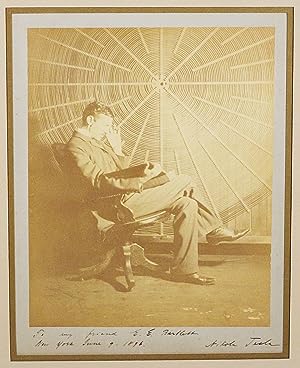
![Image du vendeur pour [Archive]: A Collection of Inscribed Books, Correspondence, and Ephemera Related to FDR and his Friend and Personal Assistant, Marvin H. "Mac" McIntyre mis en vente par Between the Covers-Rare Books, Inc. ABAA](https://pictures.abebooks.com/inventory/md/md31255210058.jpg)
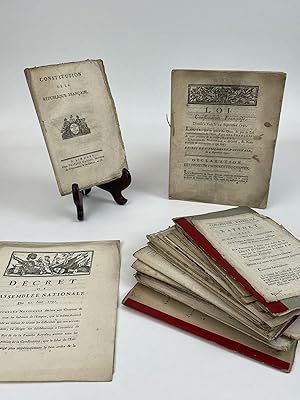
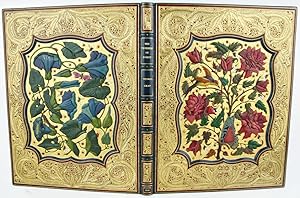
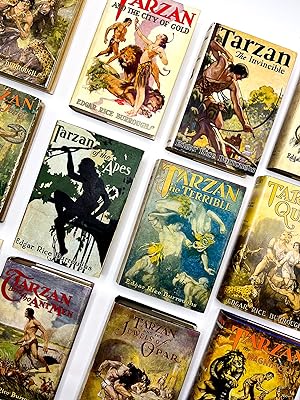
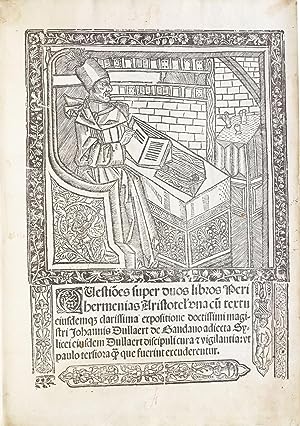
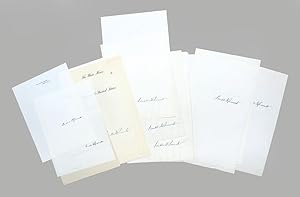

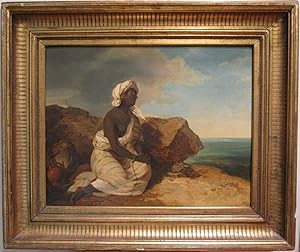
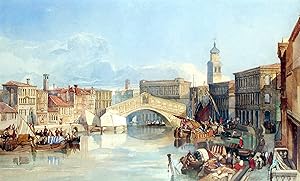
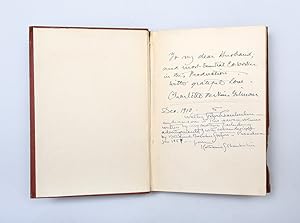
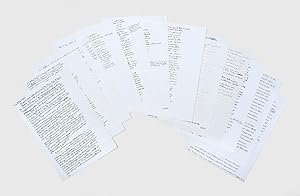
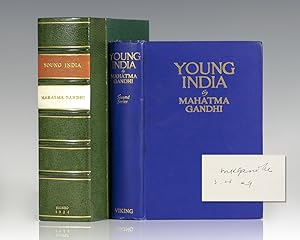
![Image du vendeur pour Autograph Letter Signed [ALS] on The Lord of the Rings mis en vente par Manhattan Rare Book Company, ABAA, ILAB](https://pictures.abebooks.com/inventory/md/md31725045637.jpg)

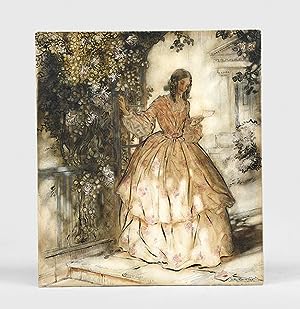

![Image du vendeur pour Marlborough. His Life and Times. Volume I [&] Volume II. mis en vente par Peter Harrington. ABA/ ILAB.](https://pictures.abebooks.com/inventory/md/md31825901069.jpg)
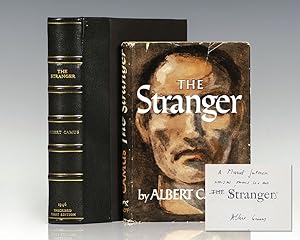
![Image du vendeur pour [Man's Search for Meaning] Ein Psycholog erlebt das Konzentrationslager (Österreichische Dokumente zur Zeitgeschichte, Bd. 1) mis en vente par Burnside Rare Books, ABAA](https://pictures.abebooks.com/inventory/md/md31693066089.jpg)
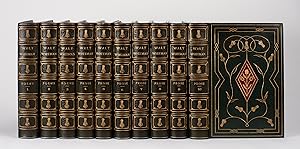
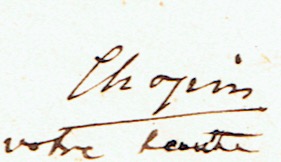
![Image du vendeur pour Buffalo Bill [and the "Frenchman's Bottle Gag," a comic tableau from the wild west show] mis en vente par Donald A. Heald Rare Books (ABAA)](https://pictures.abebooks.com/inventory/md/md765237727.jpg)
![Image du vendeur pour Typed Letter Signed [TLS] introducing The Lord of the Rings mis en vente par Manhattan Rare Book Company, ABAA, ILAB](https://pictures.abebooks.com/inventory/md/md31725056738.jpg)
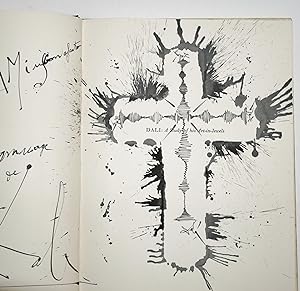
![Image du vendeur pour Typed Letter Signed [TLS] mis en vente par Manhattan Rare Book Company, ABAA, ILAB](https://pictures.abebooks.com/inventory/md/md31806810235.jpg)
